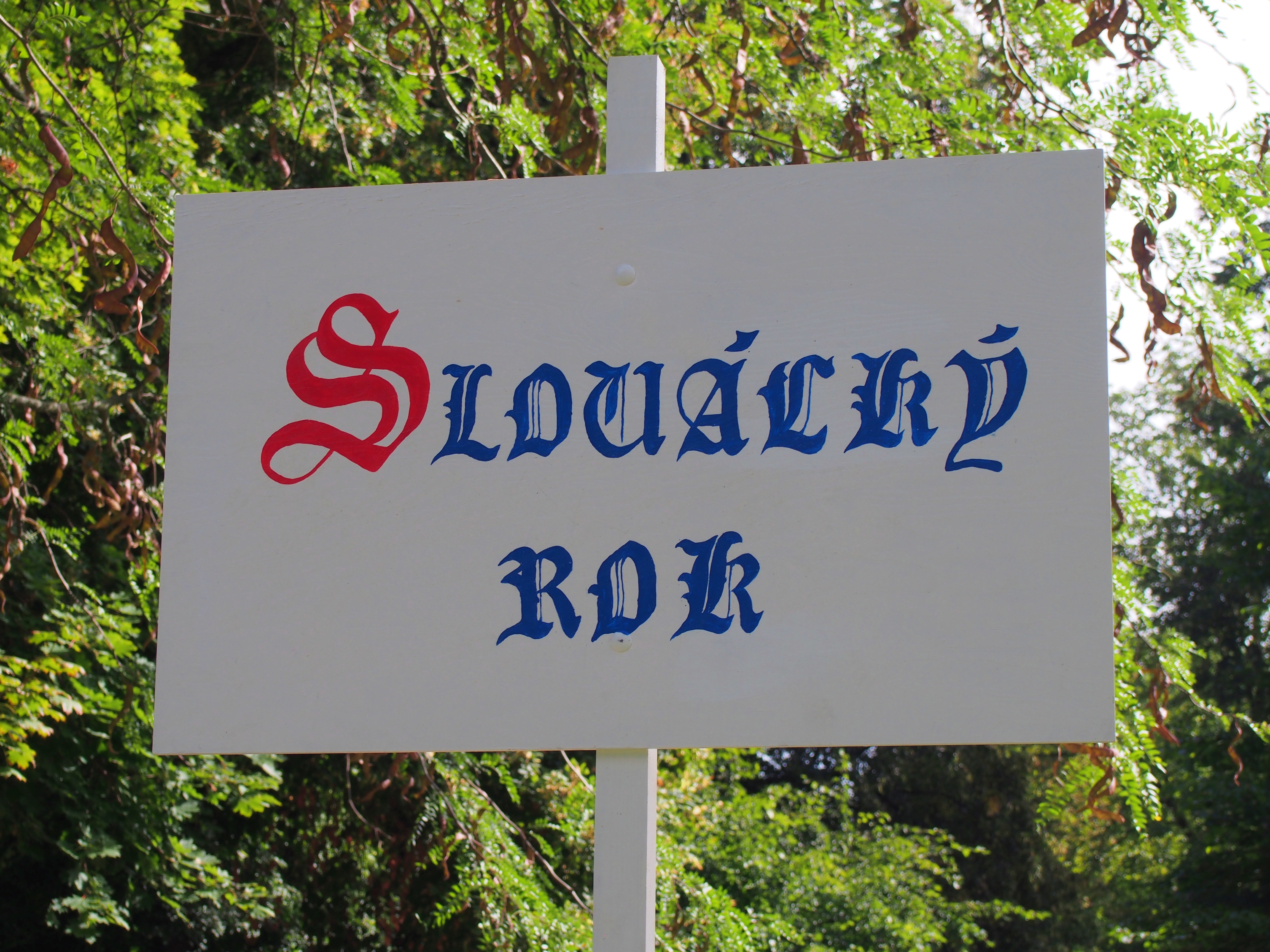
And so we’re done again! The world has the Olympic Games every four years and we have the Moravian Slovak Year in Kyjov, my hometown. One of the most beautiful and also the oldest ethnographic festivities in our country. All municipalities of the Kyjov region and neighboring Ždánice are participating in the celebrations of the Moravian Slovak Year. Well, in short, it was four days of amazing dance and singing performances and entertainment until early morning, a parade with costumed participants (who has a costume, in short, walks in it), wines and regional cuisine.
“The Moravian Slovak year, the oldest regional folklore festival every four years gives joy, happiness, beauty, musicians tune the notes. Pentle flutters, it’s merry everywhere, come to Kyjov, you will like it!”
THAT FOLKLORE DOESN’T TELL YOU ANYTHING?
In my article, I would like to show you that there are things we should be rightfully proud of and follow the traditions of our ancestors. I am of the opinion that their observance and preservation is important not only for our culture, but also for ourselves. And believe me, a good glass of Moravian wine will unleash everyone’s tongue and legs, so your journey to folklore can become much easier. 🙂
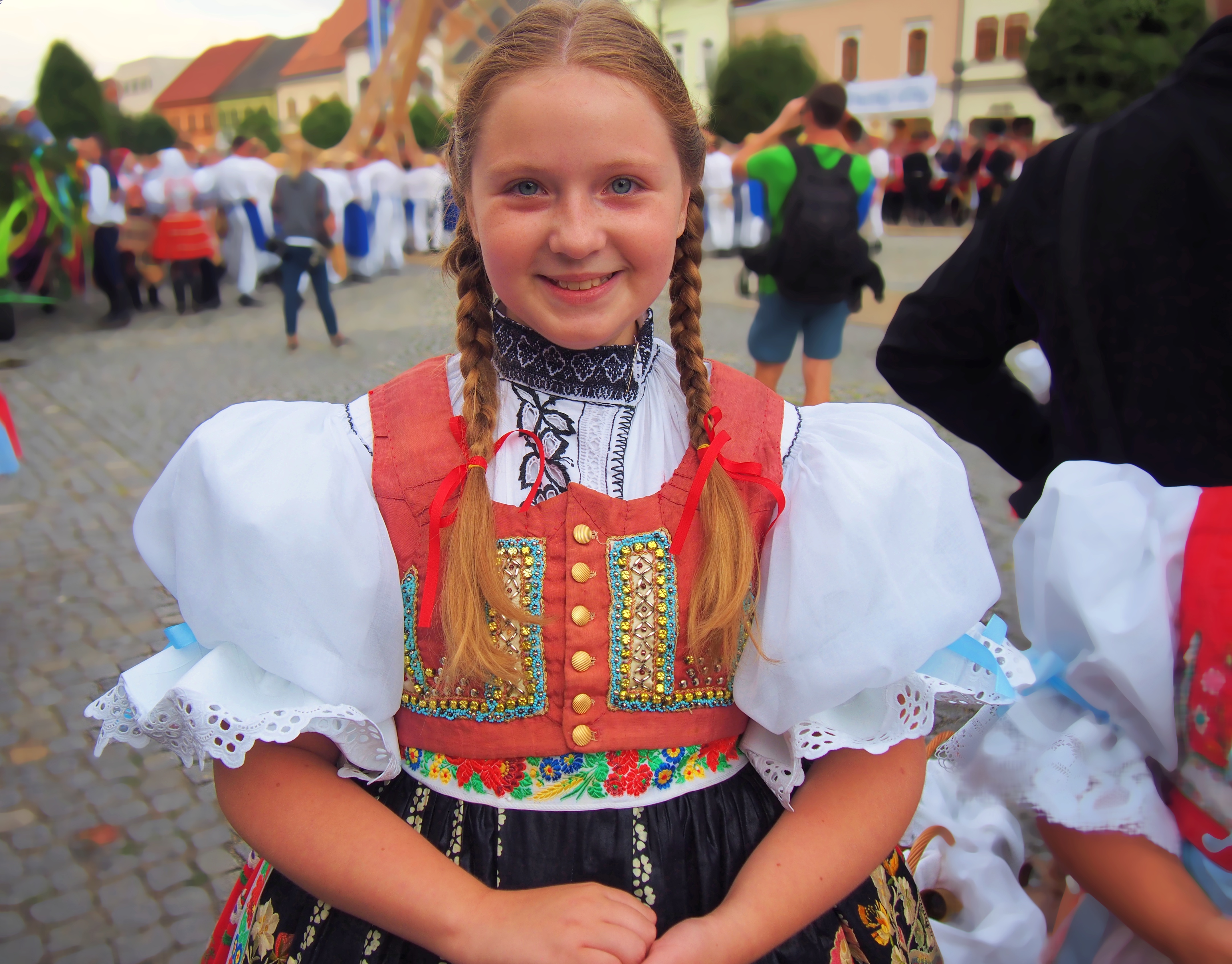 The people experienced the first year of the Moravian Slovak Year, even with the famous Ride of the Kings, in 1921, then under the baton of Sokol. The festival was interrupted by II. world war and post-war years. It was renovated in 1956 and has been held regularly every four years since 1971. Summer gardens, passages and city nooks are suddenly transformed in Kyjov for everyone who wants to sing, dance or just listen to the dance floors and stages.
The people experienced the first year of the Moravian Slovak Year, even with the famous Ride of the Kings, in 1921, then under the baton of Sokol. The festival was interrupted by II. world war and post-war years. It was renovated in 1956 and has been held regularly every four years since 1971. Summer gardens, passages and city nooks are suddenly transformed in Kyjov for everyone who wants to sing, dance or just listen to the dance floors and stages.
MAYPOLE ERECTION
The beginning of the Moravian Slovak Year always begins with the Maypole erection, which is a symbol of the festivities. At the end of Maypole is a green top, which is decorated with colorful roses, ribbons and a Turkish scarf.
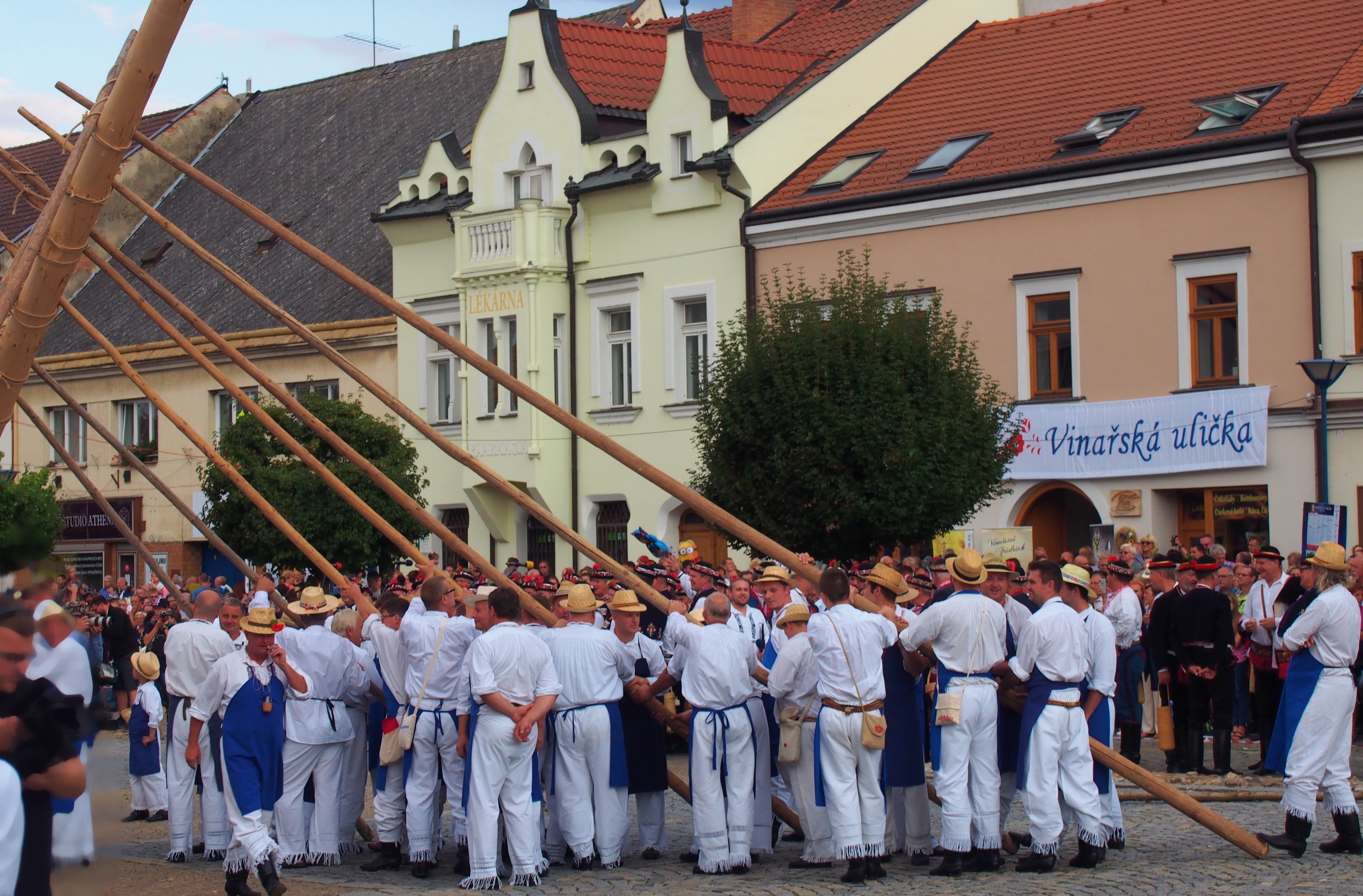
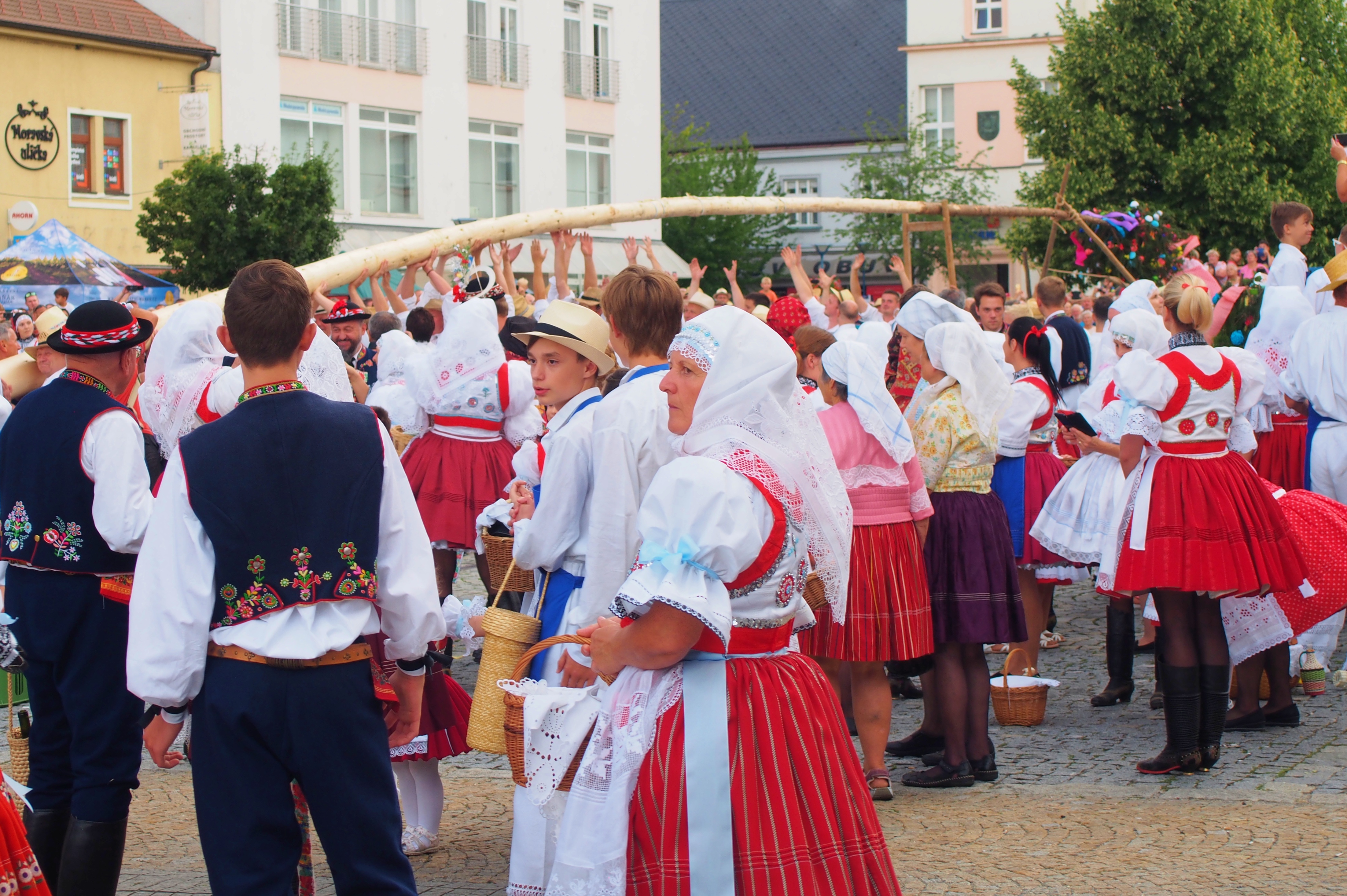 “Malérečky from Šardice” decorated the square with ornaments. According to an old tradition, they used a mixture of sand and flour. So that the wind would not blow the shapes, they sprinkled water on each piece, the flour stuck and dried. Ornaments will last for several weeks on paving or asphalt.
“Malérečky from Šardice” decorated the square with ornaments. According to an old tradition, they used a mixture of sand and flour. So that the wind would not blow the shapes, they sprinkled water on each piece, the flour stuck and dried. Ornaments will last for several weeks on paving or asphalt.

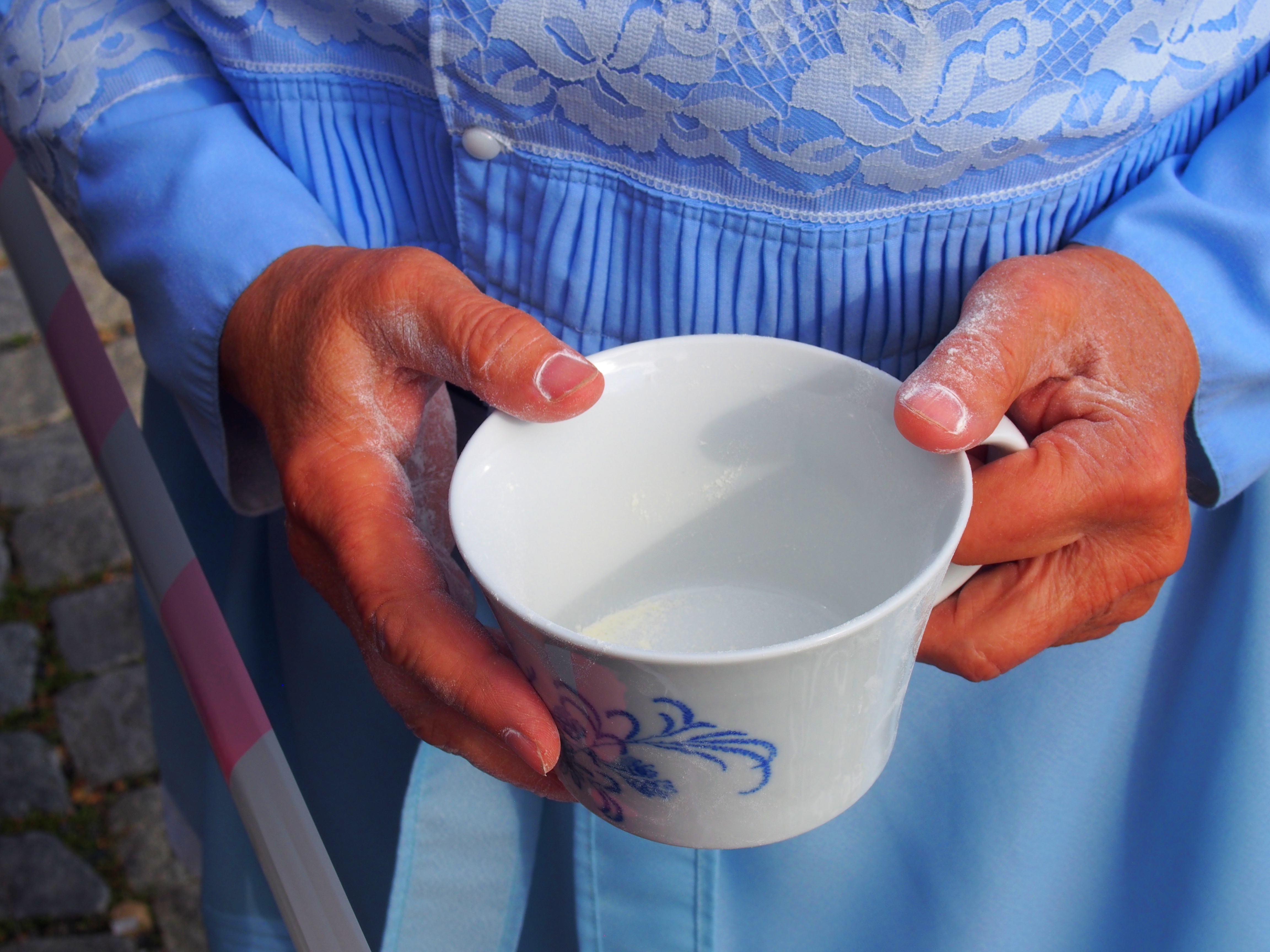
 A group of men from nearby Bukovany on the Kyjov Square is using a poles and, above all, a sophisticated system of commands to erect a 40-meter Maypole, which they brought with a horse-drawn carriage.
A group of men from nearby Bukovany on the Kyjov Square is using a poles and, above all, a sophisticated system of commands to erect a 40-meter Maypole, which they brought with a horse-drawn carriage.

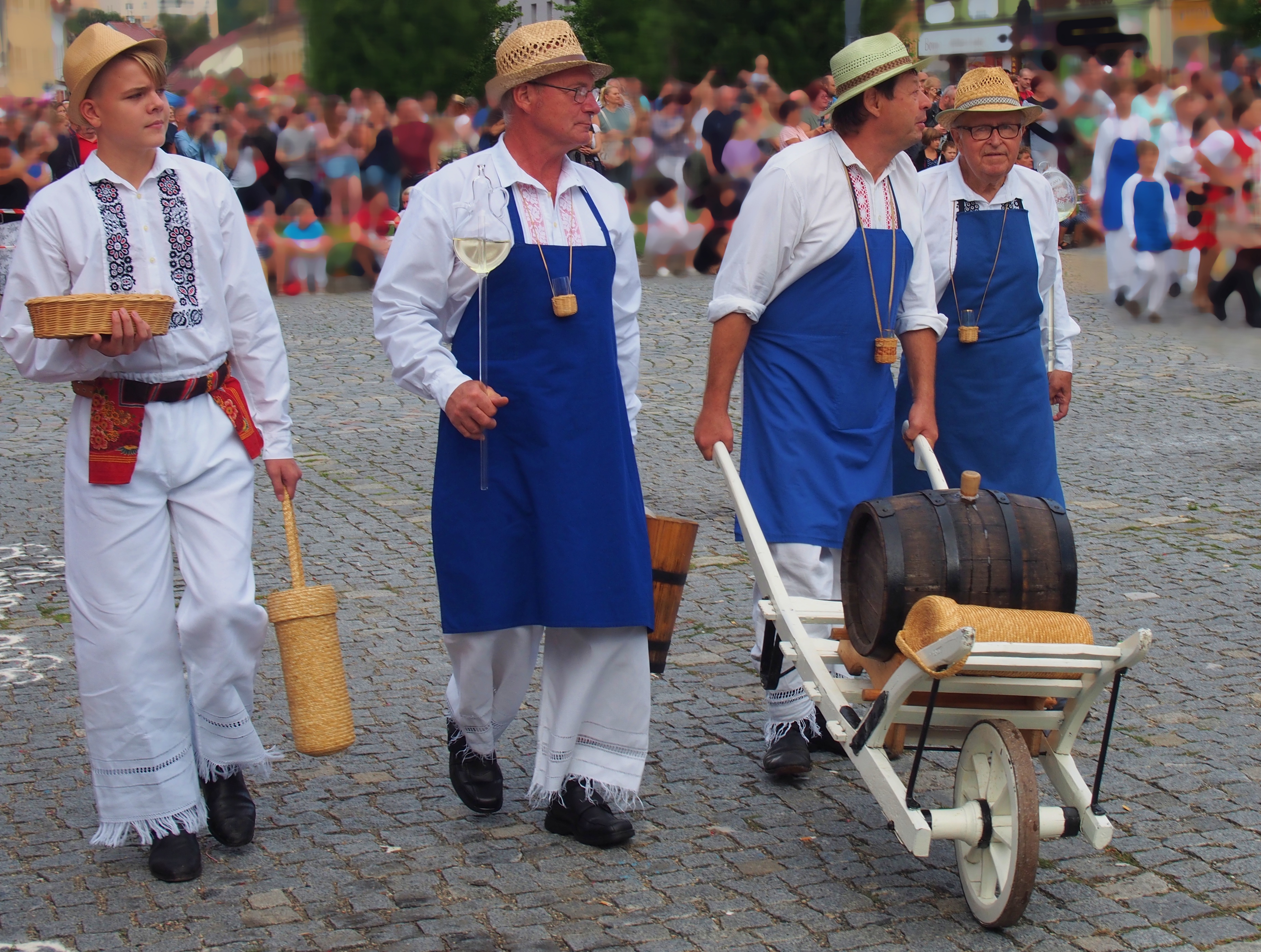 The children of Bukovany also brought their little Maypole on a hand-drawn wooden cart, which they built after the example of adults.
The children of Bukovany also brought their little Maypole on a hand-drawn wooden cart, which they built after the example of adults.

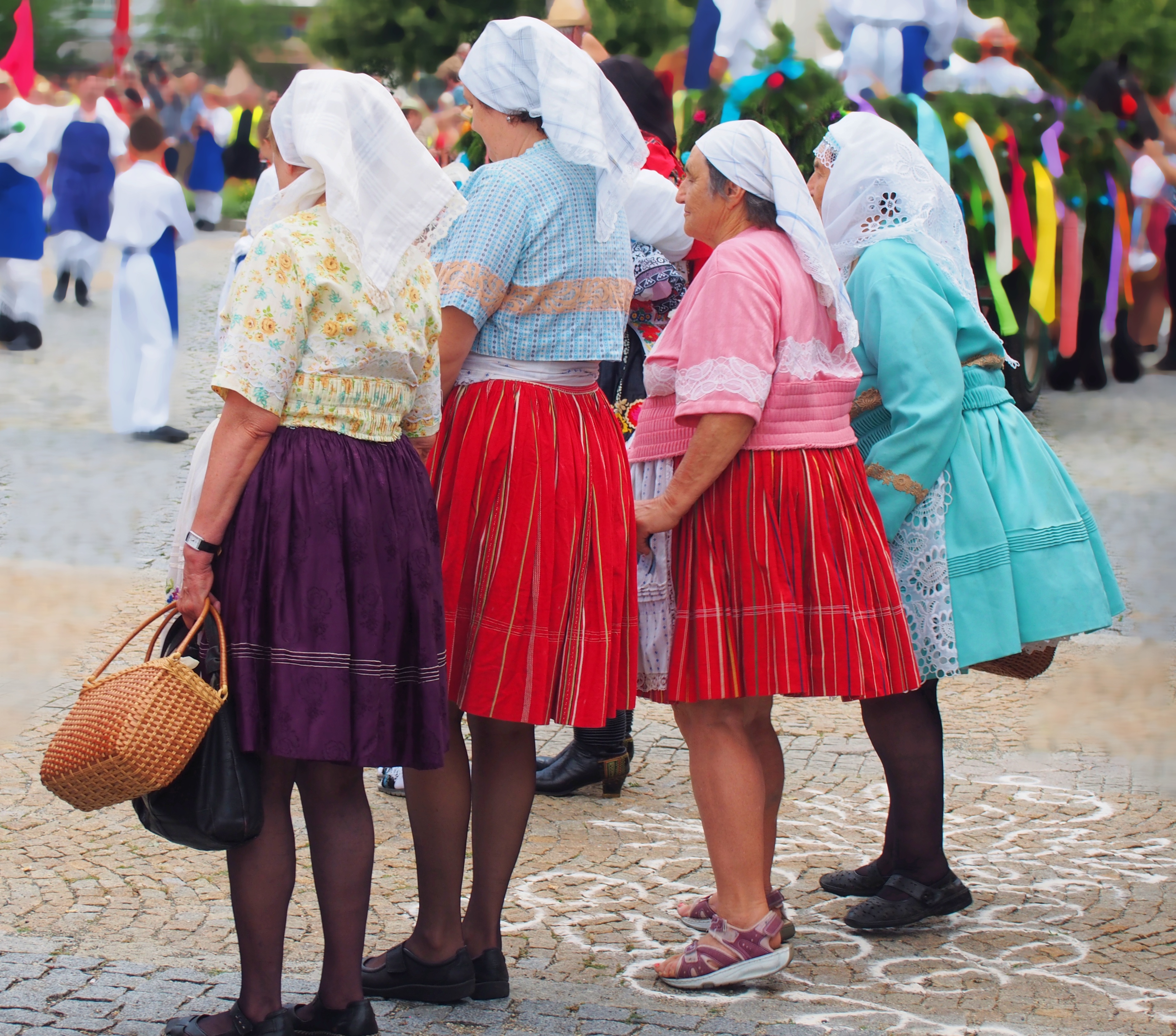
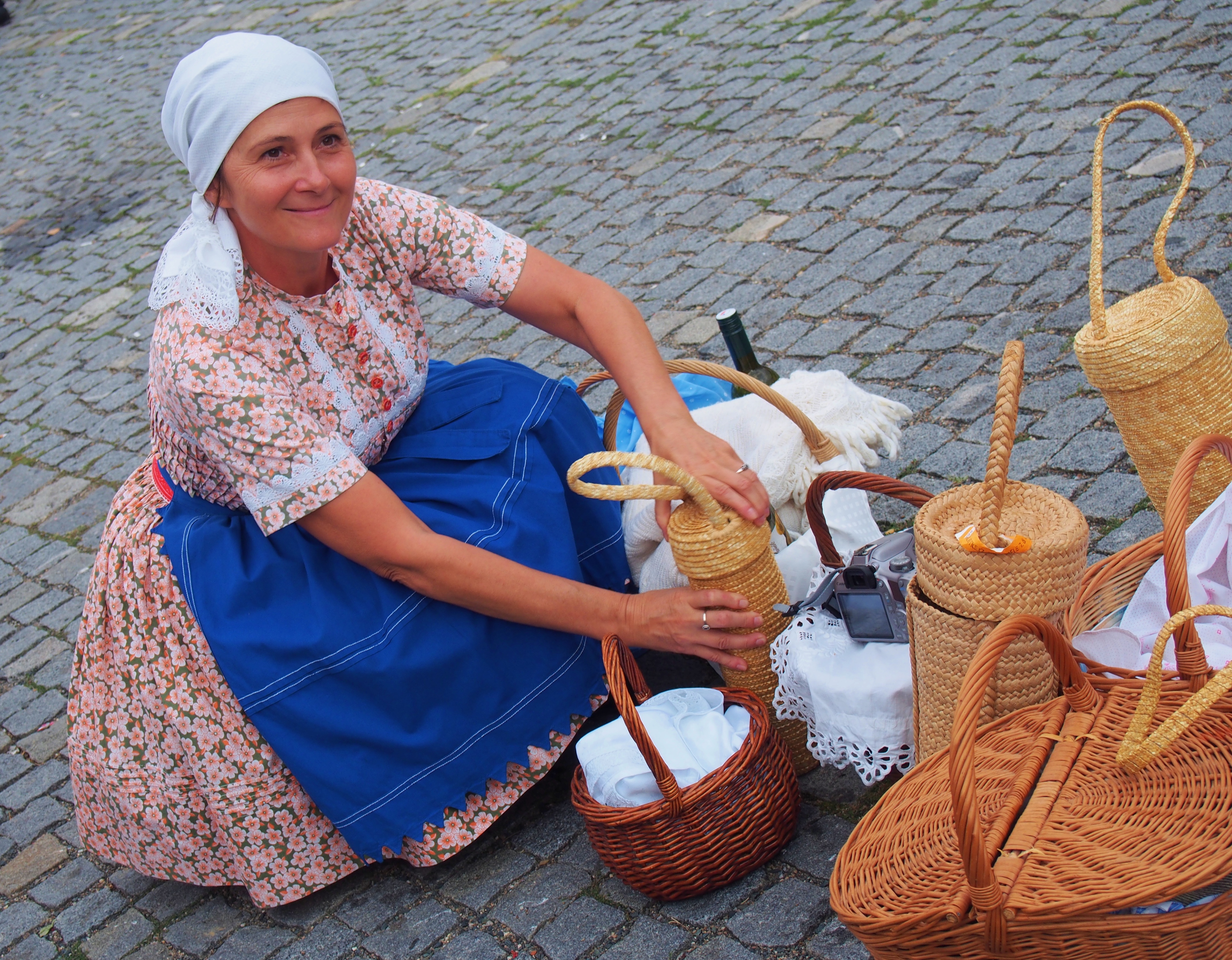
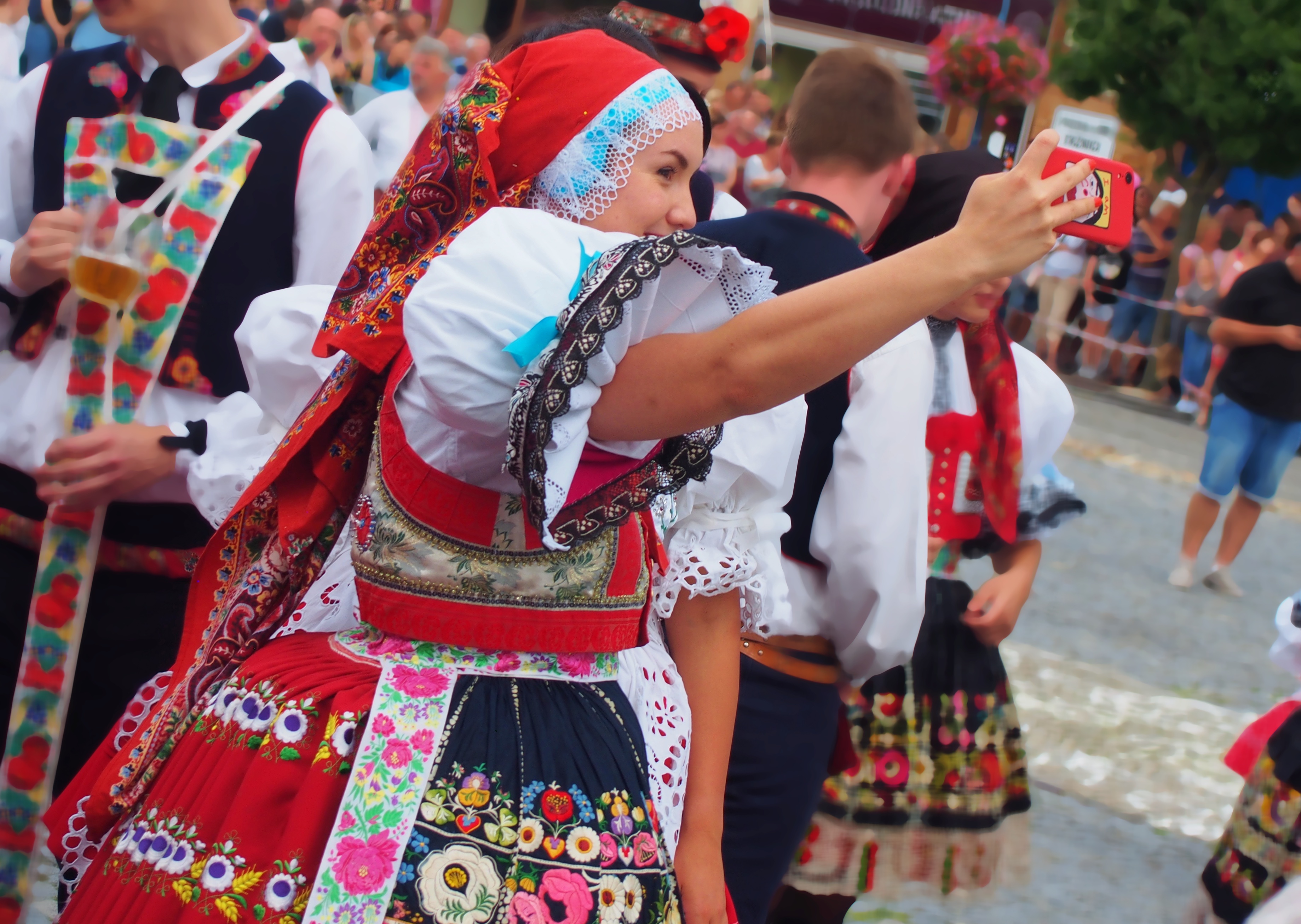
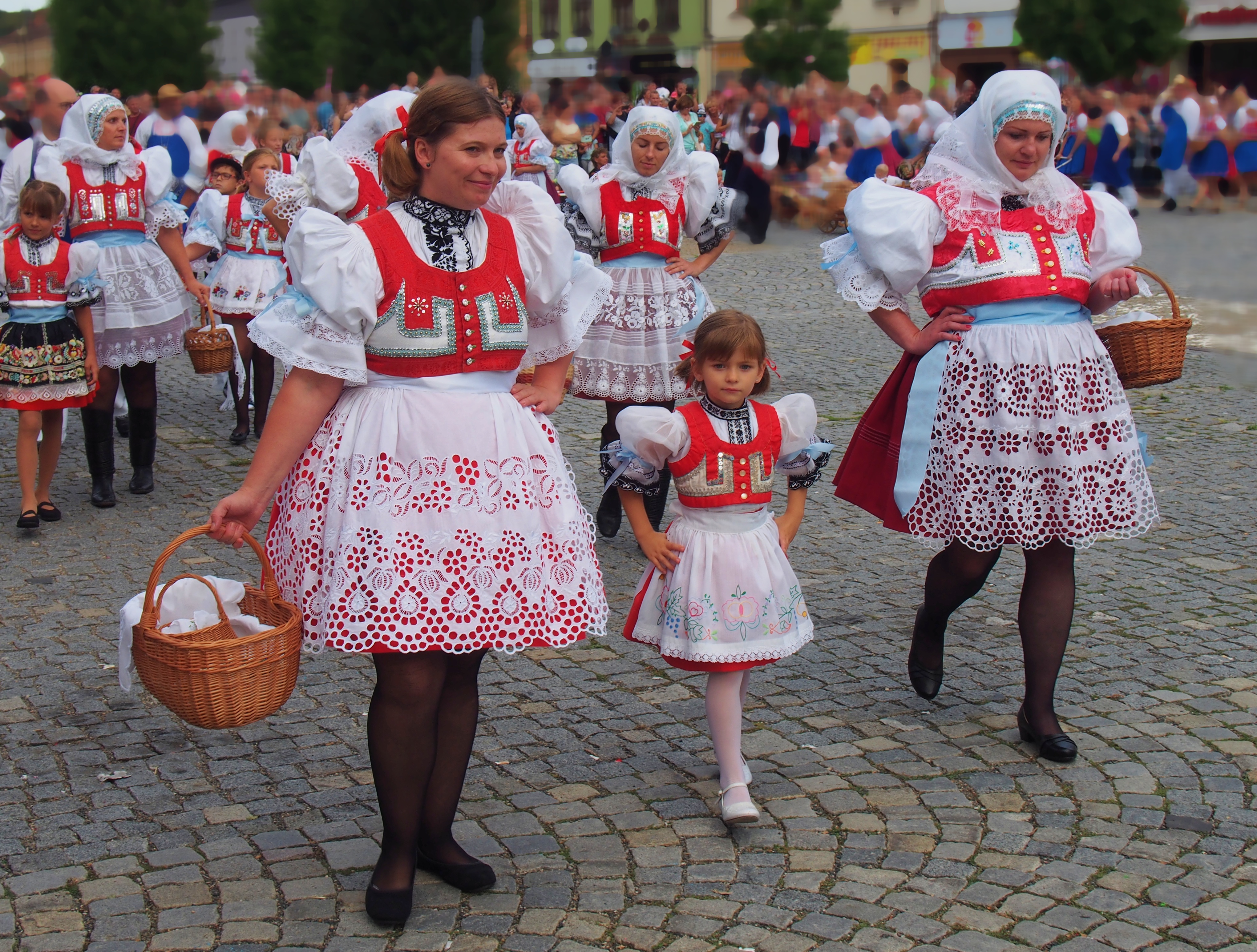
PARADE IN FOLK COSTUMES
I was totally excited about the parade in folk costumes. There were costumes worn in winter, summer, ceremonial, holiday and work costumes and clothes from Kyjov’s Dolňácko, Vracovsko and Ždánsko regions. The staircase of the Church of the Assumption of the Blessed Virgin Mary and Saints Cyril and Methodius really shone with beautiful costumes. I really liked that this show tried to show the costume diversity depending on the folk customary calendar. Visitors could see how they wore clothes in Moravia at Christmas, Easter or other important events such as Whitsuntide (celebrated in May and June to celebrate the awakened nature), the end of the harvest and the feast (these are associated with the celebration of the saint to whom the local church was dedicated).
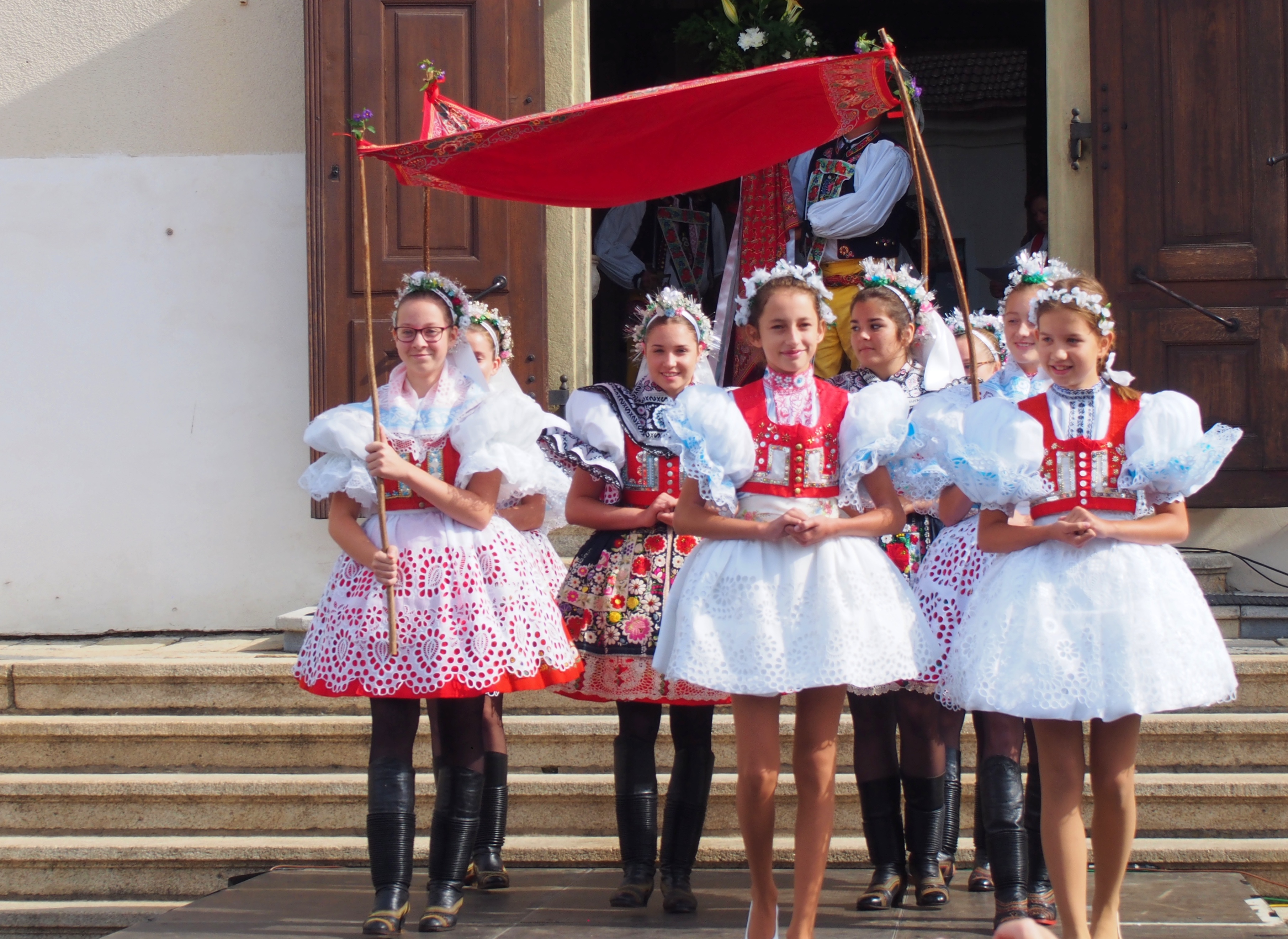
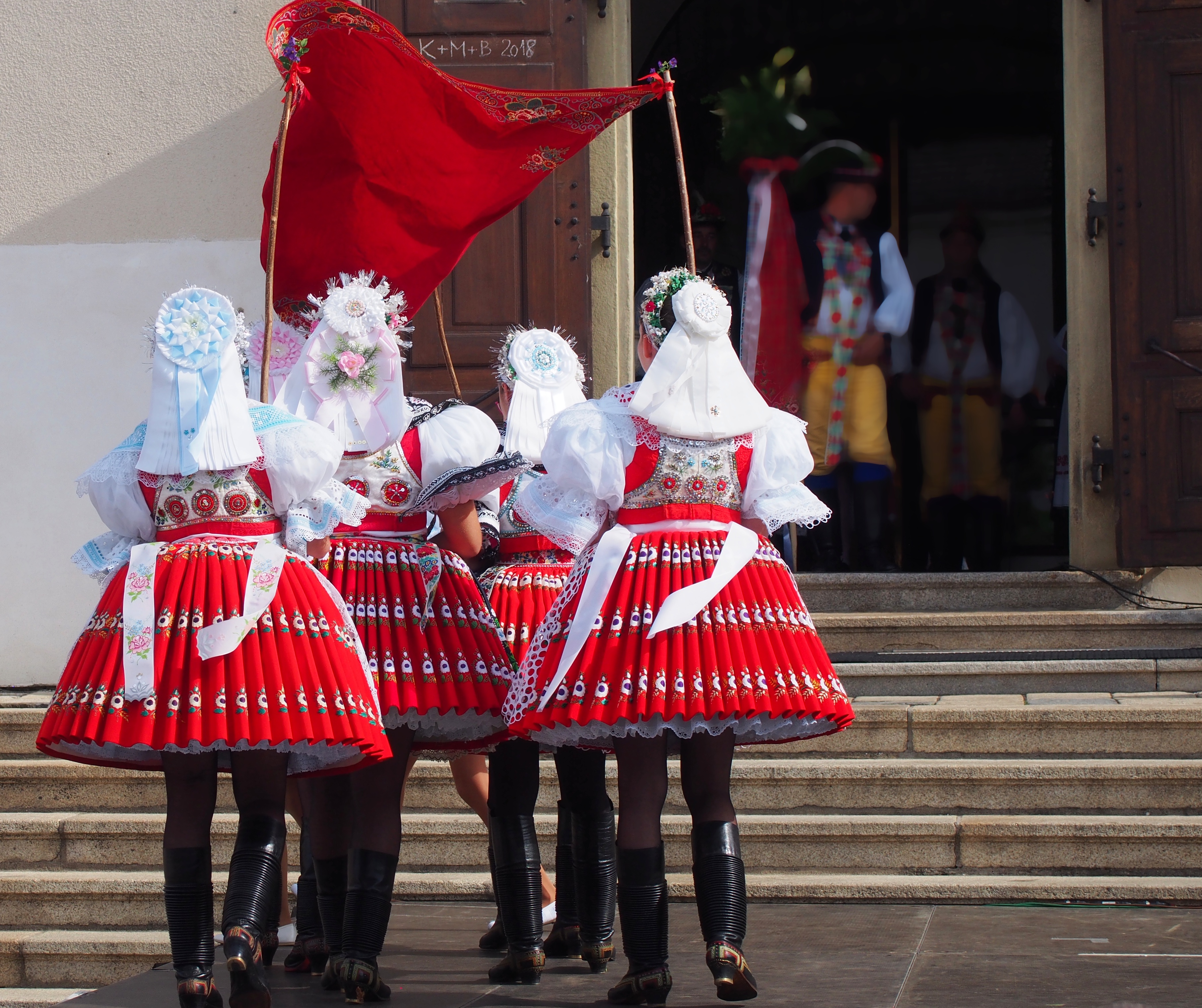
KYJOV FOLK COSTUMES AND FOLK CUSTUMES FROM A DISTANT AREA
You may know the Kyjov costume from the film comedy “How Poets Lose Illusions“. But let me introduce it a bit in the following lines.
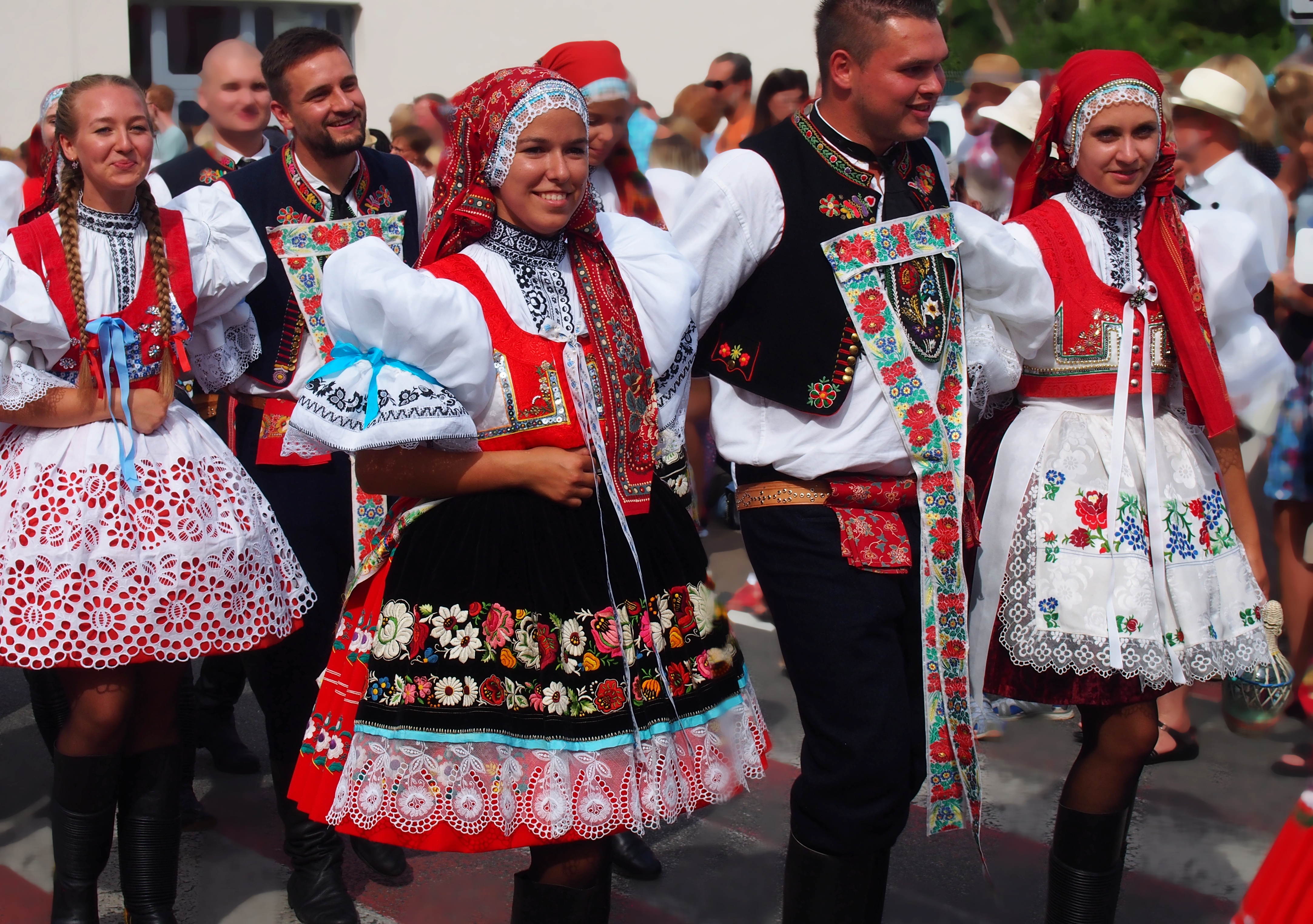
FEMALE’S COSTUME
I love women’s Kyjov costume. I find the most beautiful of all women’s costumes in the Czech Republic. And I wouldn’t mind wearing it in the past, because I think it’s very sexy.
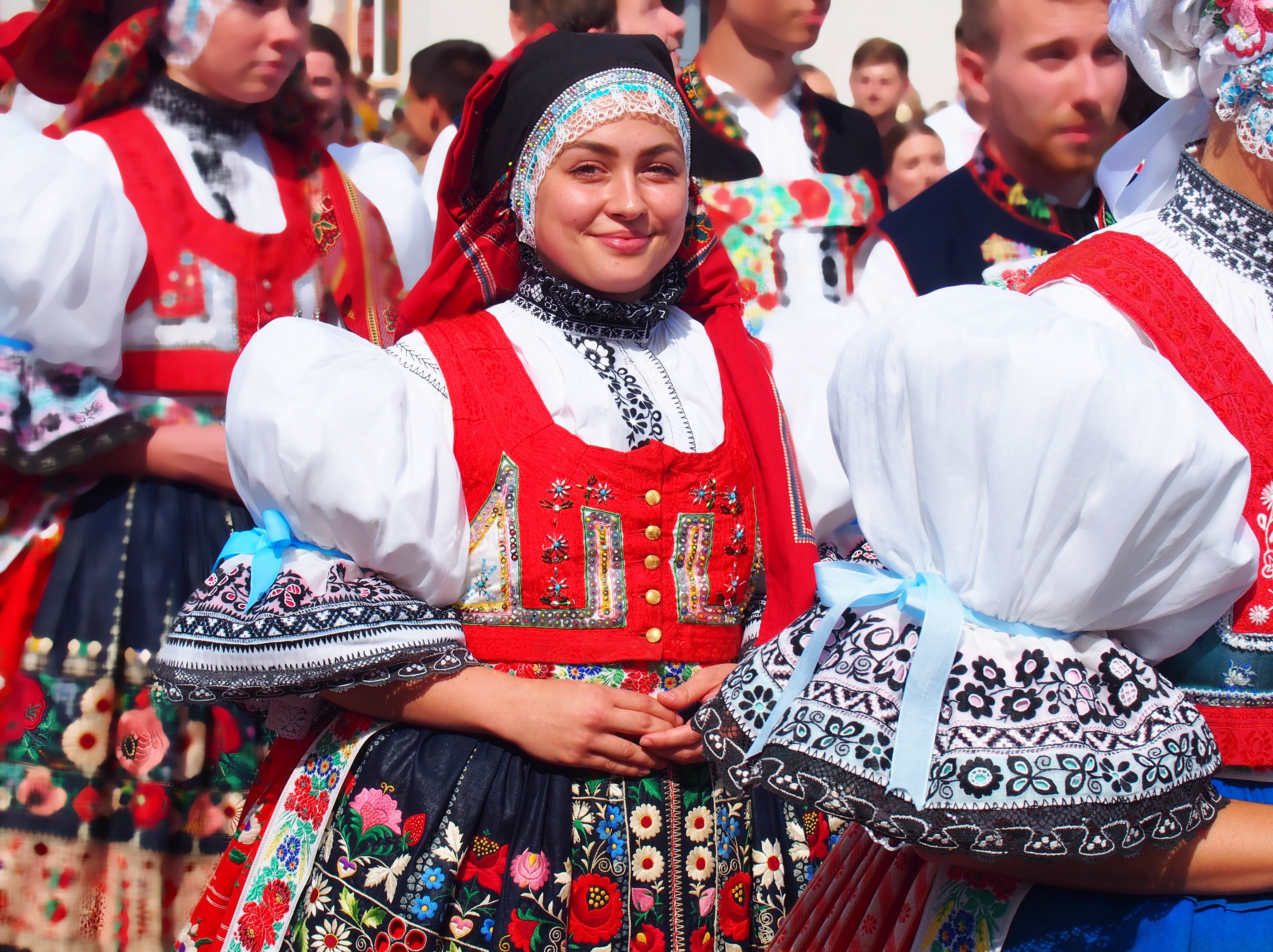 Women’s “kanafasky”(skirts) are beautifully red reaching to the knees. Below them are many overhanging lower skirts (starched petticoats), ringed or serrated at the bottom.
Women’s “kanafasky”(skirts) are beautifully red reaching to the knees. Below them are many overhanging lower skirts (starched petticoats), ringed or serrated at the bottom.
 Fěrtoch (apron) can be white, yellow or black and is richly embroidered. The shirt has a black and white ribbon around the neck, chest and sleeves and is worn on the body first. The sleeves have long collars, all richly embroidered.
Fěrtoch (apron) can be white, yellow or black and is richly embroidered. The shirt has a black and white ribbon around the neck, chest and sleeves and is worn on the body first. The sleeves have long collars, all richly embroidered.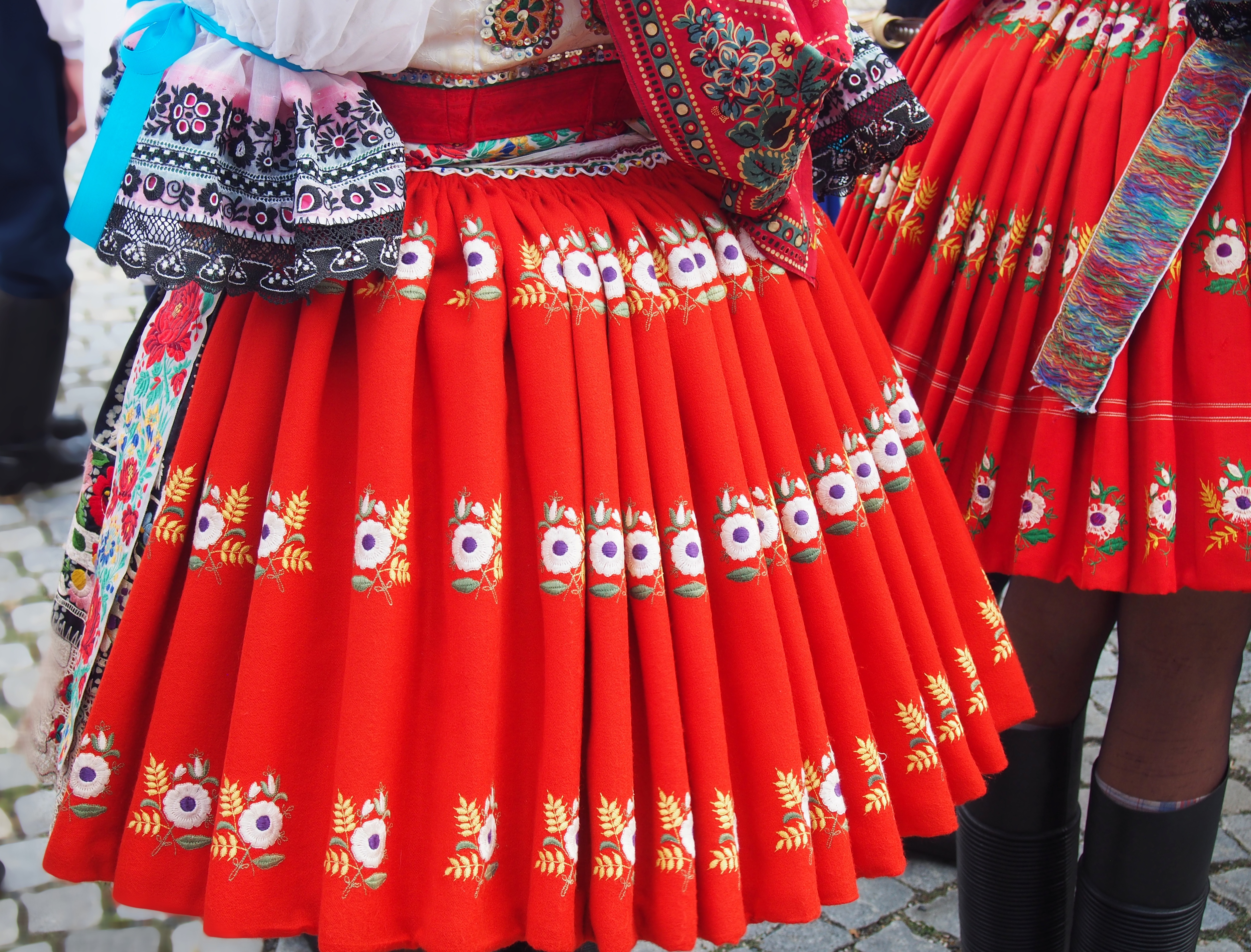
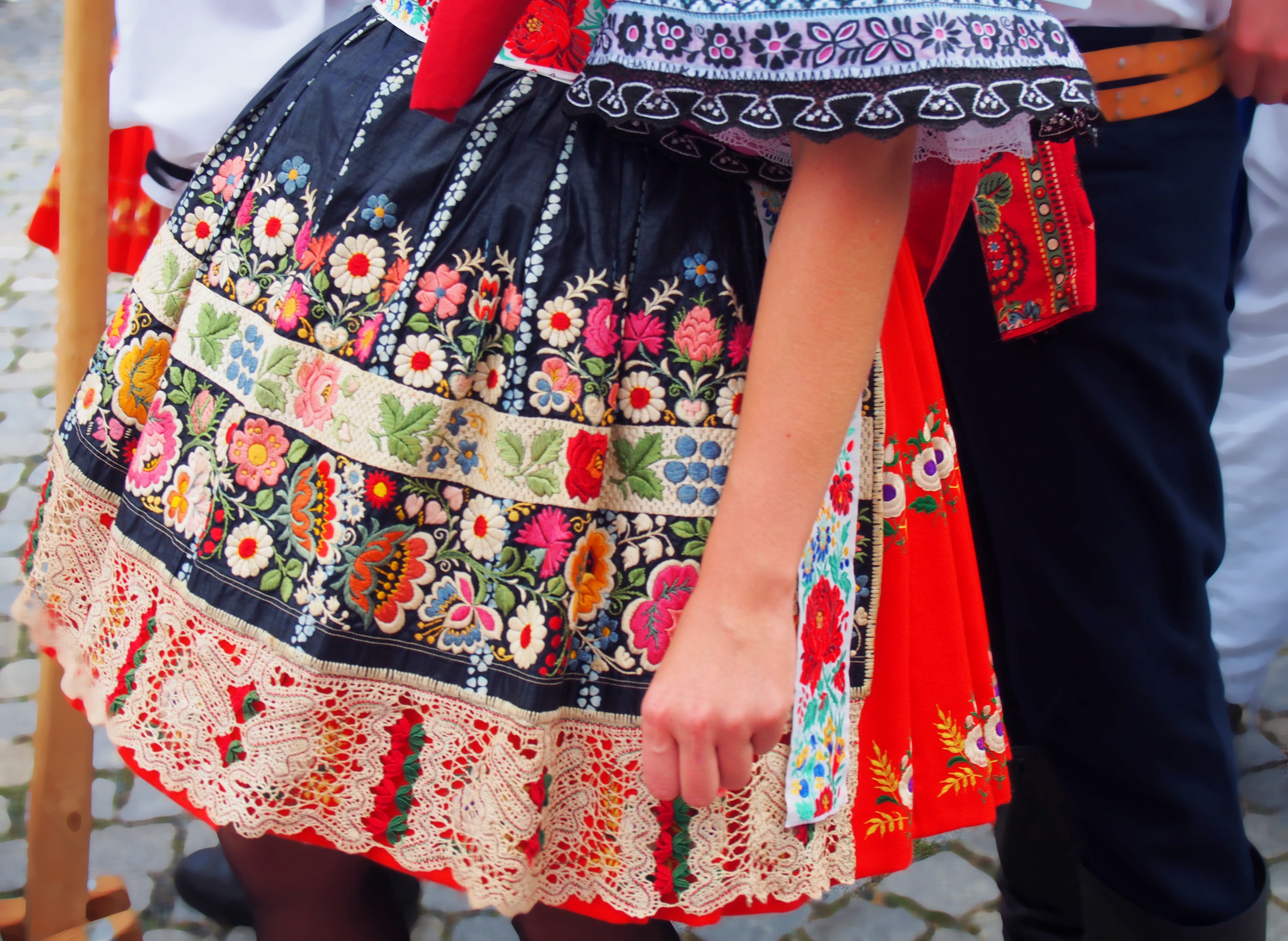 The sleeves are bulbous with lace curls, which are embroidered in black. Another part is the sleeves on the collar and the ends of the sleeves with rich regional embroidery.
The sleeves are bulbous with lace curls, which are embroidered in black. Another part is the sleeves on the collar and the ends of the sleeves with rich regional embroidery.
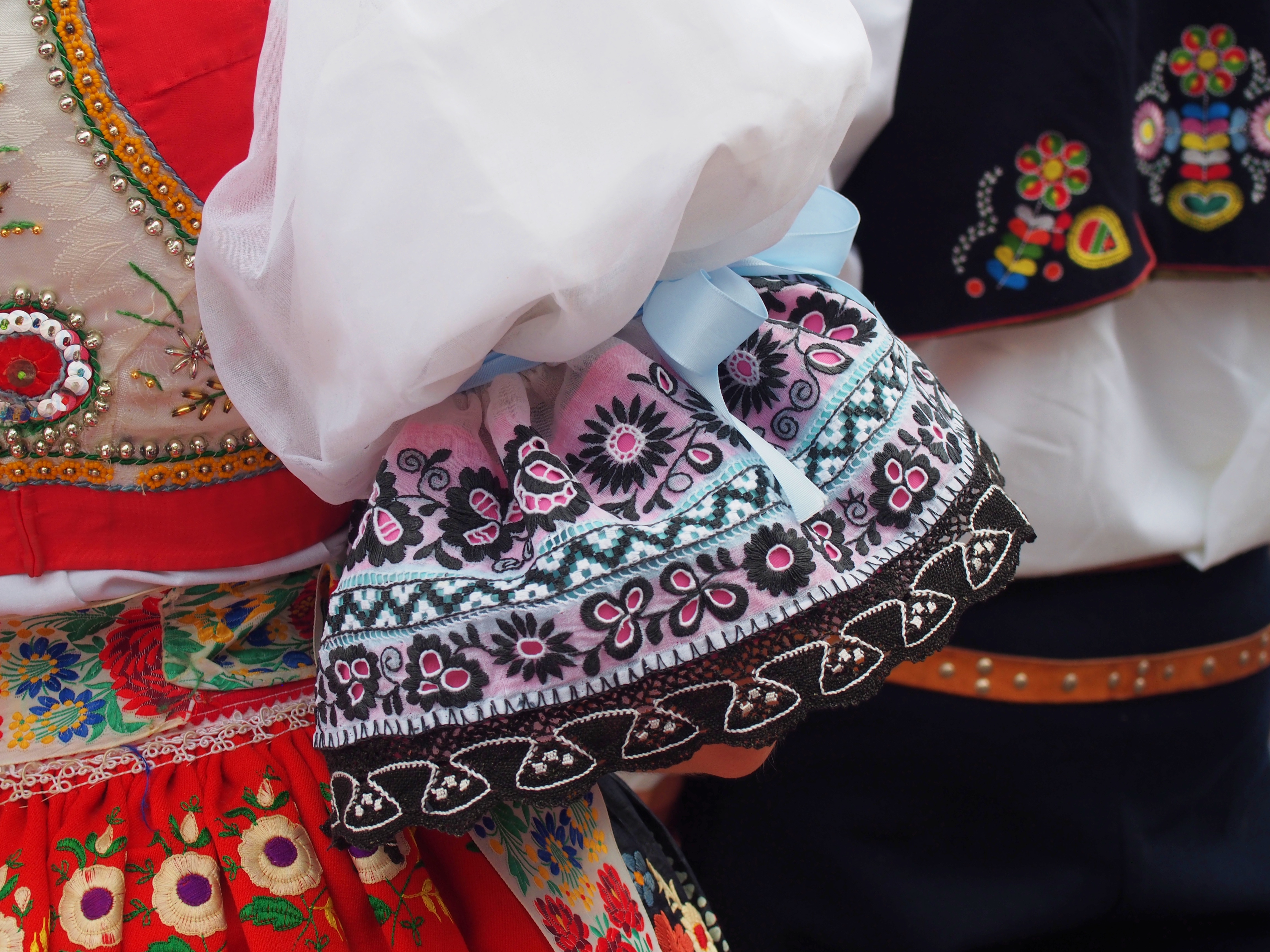 A cordola or vest (vest) is worn over them. The cord is sewn from flowered silk. It is red-lined, the neckline is square or rounded.
A cordola or vest (vest) is worn over them. The cord is sewn from flowered silk. It is red-lined, the neckline is square or rounded.
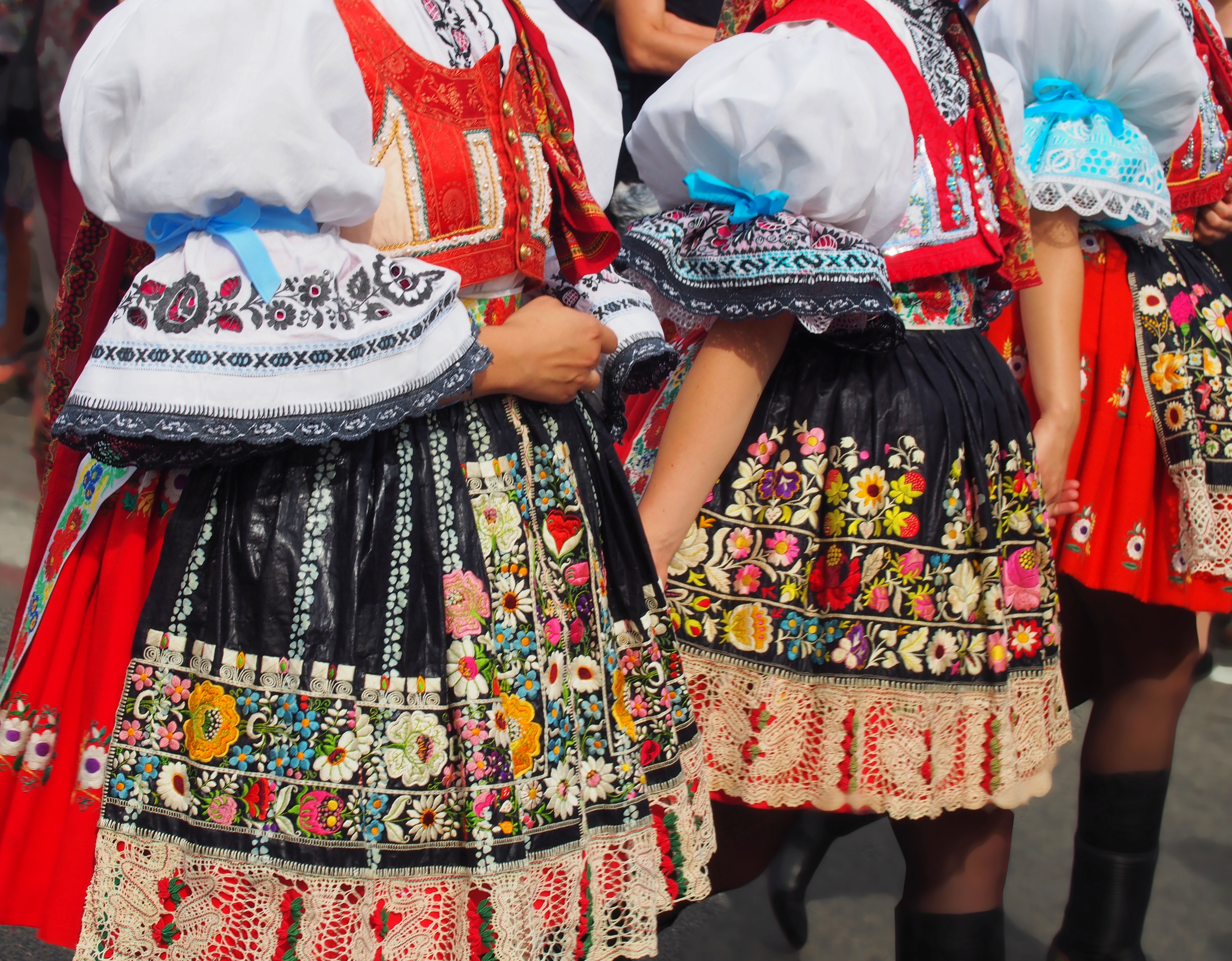 The costume includes black high boots with embroidery (“čižmy”) or “krpce” (leather low boots with a long strap for fastening around the calf). They are beautifully embossed. Heels and heels are unloaded with yellow nails.
The costume includes black high boots with embroidery (“čižmy”) or “krpce” (leather low boots with a long strap for fastening around the calf). They are beautifully embossed. Heels and heels are unloaded with yellow nails.
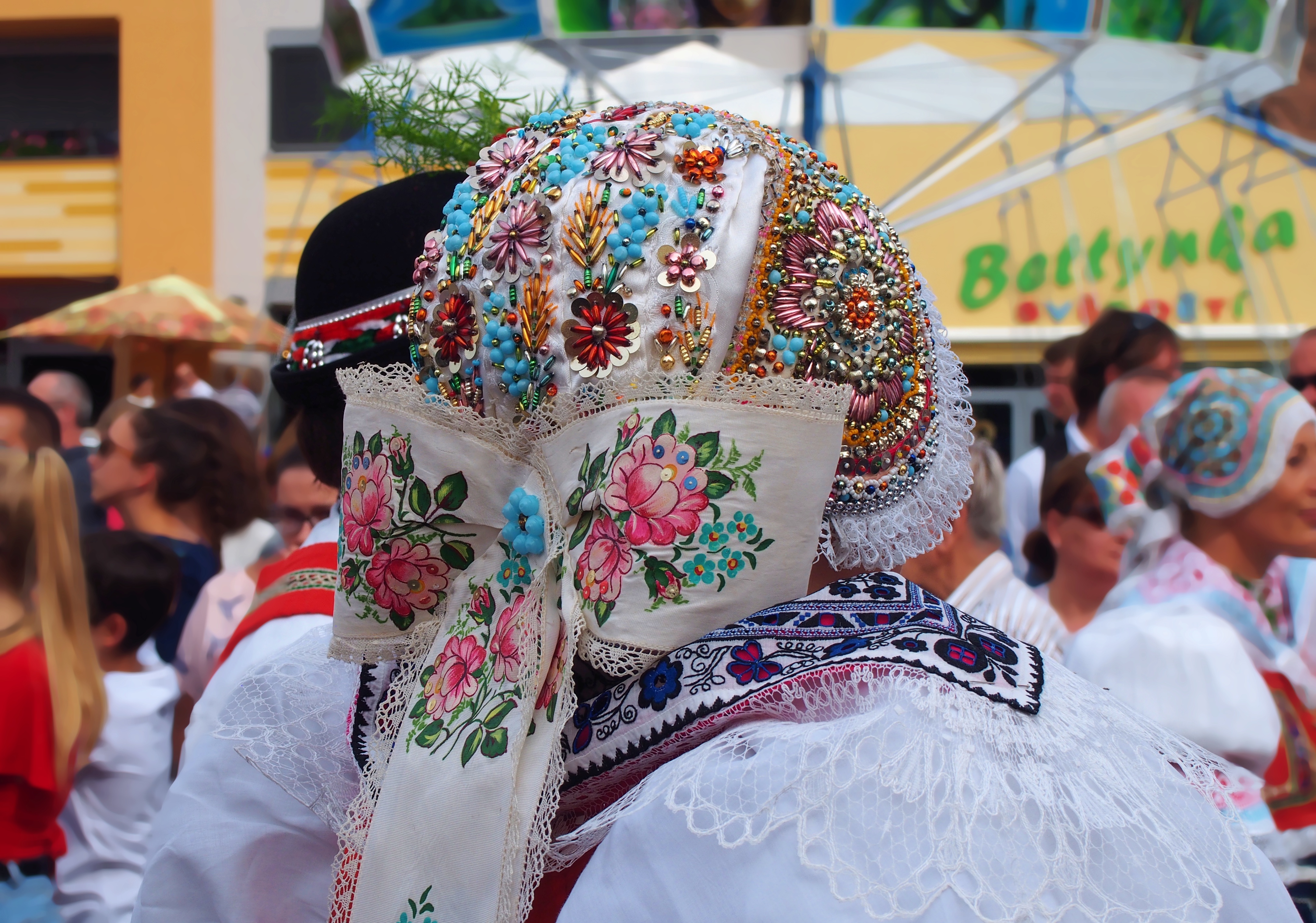
 The scarf is on the head, most often red. A decorated, richly embroidered hat is worn under the scarf. Usually, however, only a cap without a scarf is worn. The scarves are different, from large Turkish to small, differently colored scarves. Girls and married women have their hair tangled in a bun from two vultures.
The scarf is on the head, most often red. A decorated, richly embroidered hat is worn under the scarf. Usually, however, only a cap without a scarf is worn. The scarves are different, from large Turkish to small, differently colored scarves. Girls and married women have their hair tangled in a bun from two vultures.
MEN’S COSTUME
Men’s costume consists of a linen shirt or shirt (shirt). It is embroidered around the neck, in certain areas and at the ends of the sleeves, where lace or perforations also appear. A cordula (vest) of various lengths is worn over it. It often includes long embroidered ribbons. The lower part of the costume consists of trousers with embroidery, into which the free ones thread an embroidered scarf. The costume includes black high boots, often with embroidery and a hat or snooker.
 The shirt is made of white canvas, with a red lined lace on the chest, and a black lace is tied to the cuffs around the wrists from top to bottom and back to the bow. For the time being, the shirt is worn loosely over “třaslavice” (linen or linen trousers). Men wear tight blue pants, laced in front and at the back. Men’s jackets are lined with so-called pints, which are pads that help the extended appearance of the chest. A colorful scarf is inserted into the puncture. The apron is also blue. The shirt has wide and long sleeves, lined with lace. There is black or pale blue, red underlay embroidery on the ends of the sleeves. Married women have white embroidery.
The shirt is made of white canvas, with a red lined lace on the chest, and a black lace is tied to the cuffs around the wrists from top to bottom and back to the bow. For the time being, the shirt is worn loosely over “třaslavice” (linen or linen trousers). Men wear tight blue pants, laced in front and at the back. Men’s jackets are lined with so-called pints, which are pads that help the extended appearance of the chest. A colorful scarf is inserted into the puncture. The apron is also blue. The shirt has wide and long sleeves, lined with lace. There is black or pale blue, red underlay embroidery on the ends of the sleeves. Married women have white embroidery.
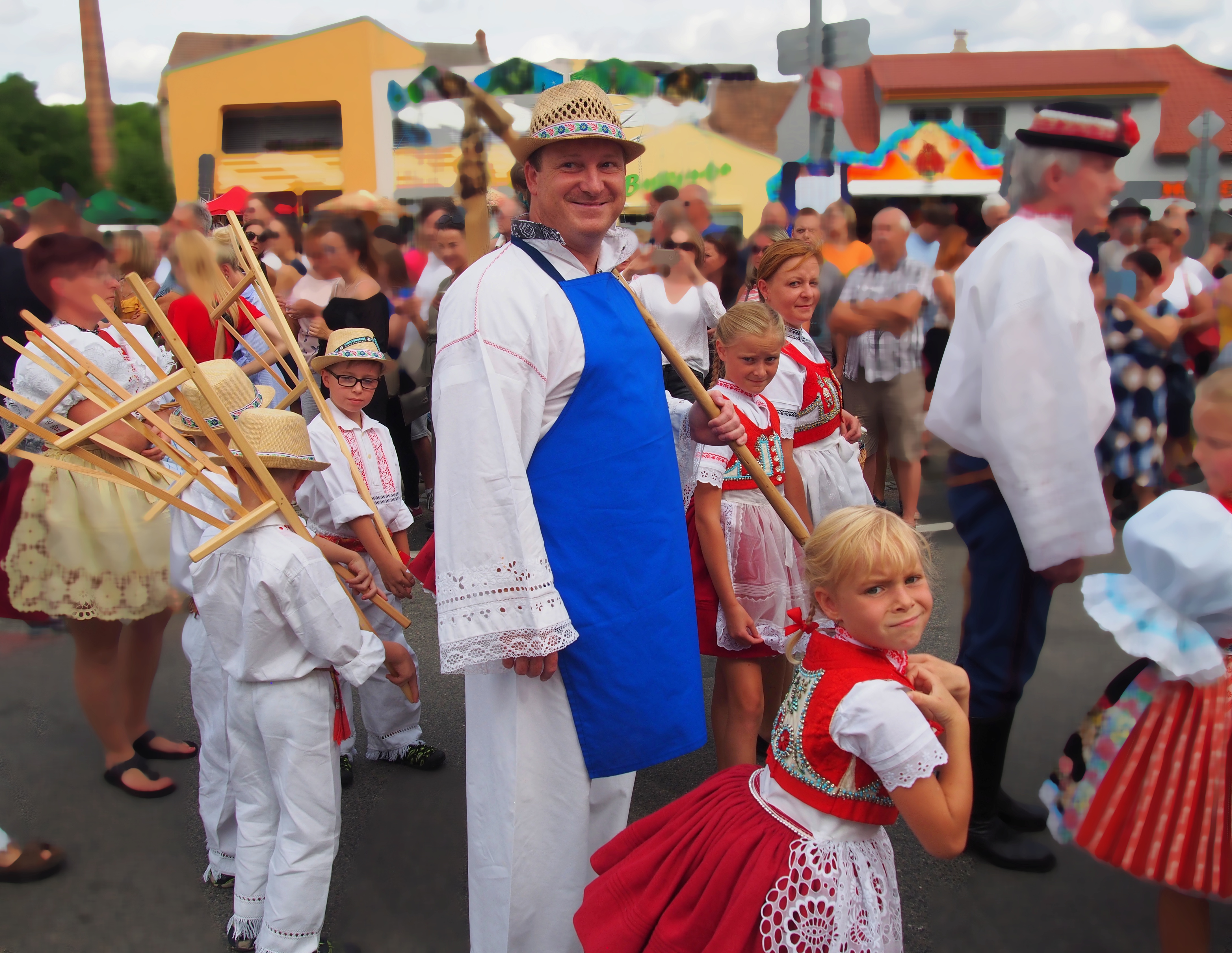 “Kordula” is silky, of various colors. It is short and is lined with ribbons around the neckline and edge. The costume also includes a hat. It is made of black felt and is decorated with colorful bows and ribbons, which are different colors for single and married. They are usually silver, gold, red and white. Single boys must not miss a “kocárek” behind the hat, ie a white long rooster feather. It is a sign of bravery! Older men do not wear a hat. Another integral part of a man’s costume is a belt made of leather. It is richly discharged and you will find it on your trousers, around which it is wrapped three times.
“Kordula” is silky, of various colors. It is short and is lined with ribbons around the neckline and edge. The costume also includes a hat. It is made of black felt and is decorated with colorful bows and ribbons, which are different colors for single and married. They are usually silver, gold, red and white. Single boys must not miss a “kocárek” behind the hat, ie a white long rooster feather. It is a sign of bravery! Older men do not wear a hat. Another integral part of a man’s costume is a belt made of leather. It is richly discharged and you will find it on your trousers, around which it is wrapped three times.
 “Cifrování” is embroidery on men’s and women’s costumes. Men have “cifrování” mainly on the pants. Younger men have this “cifrování” dark blue, older men black. And why “cifrování”? Because “cifrování” is done using a numbering machine. Otherwise, numbering is a dance performed by men and means to skillfully dance with a cross or it was also called proudly walking or knitting with the feet.
“Cifrování” is embroidery on men’s and women’s costumes. Men have “cifrování” mainly on the pants. Younger men have this “cifrování” dark blue, older men black. And why “cifrování”? Because “cifrování” is done using a numbering machine. Otherwise, numbering is a dance performed by men and means to skillfully dance with a cross or it was also called proudly walking or knitting with the feet.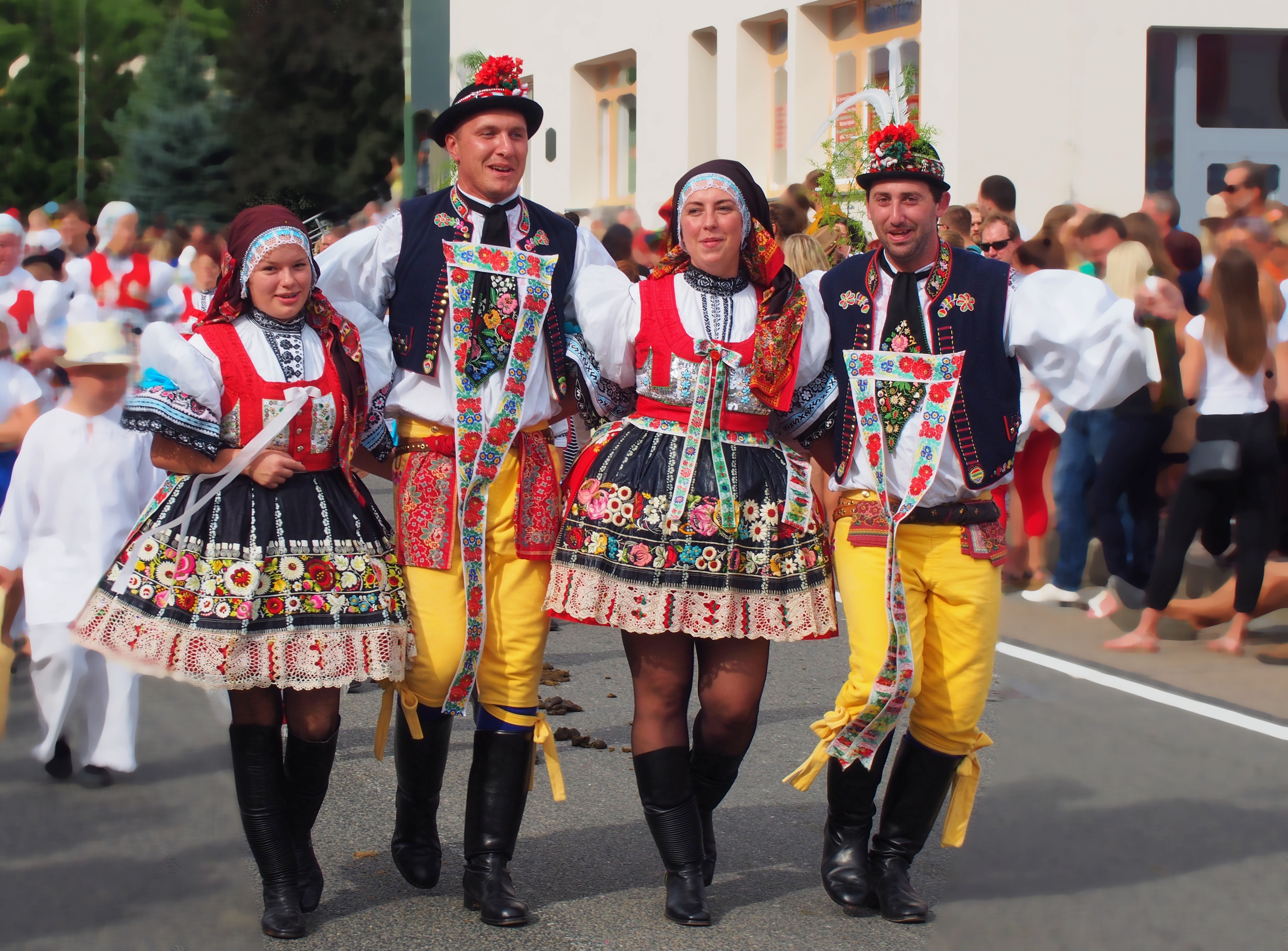 Men wear a fur coat in winter. It is mostly brown from ram skin and with rich embroidery on the chest. Under the fur coat is a blouse and a white label (vest, bodice). This short vest is made of dark blue woolen cloth and men wear it on a shirt. It is made of flannel and decorated with encryption. In winter, black rams are worn, which is a hat made of soft lambskin. The shoes have smooth boots.
Men wear a fur coat in winter. It is mostly brown from ram skin and with rich embroidery on the chest. Under the fur coat is a blouse and a white label (vest, bodice). This short vest is made of dark blue woolen cloth and men wear it on a shirt. It is made of flannel and decorated with encryption. In winter, black rams are worn, which is a hat made of soft lambskin. The shoes have smooth boots.
CHILDREN’S COSTUME
The costume of children does not make much difference between the costumes of boys and girls. The only difference between them is the embroidery, which is blue for boys and pink for girls.
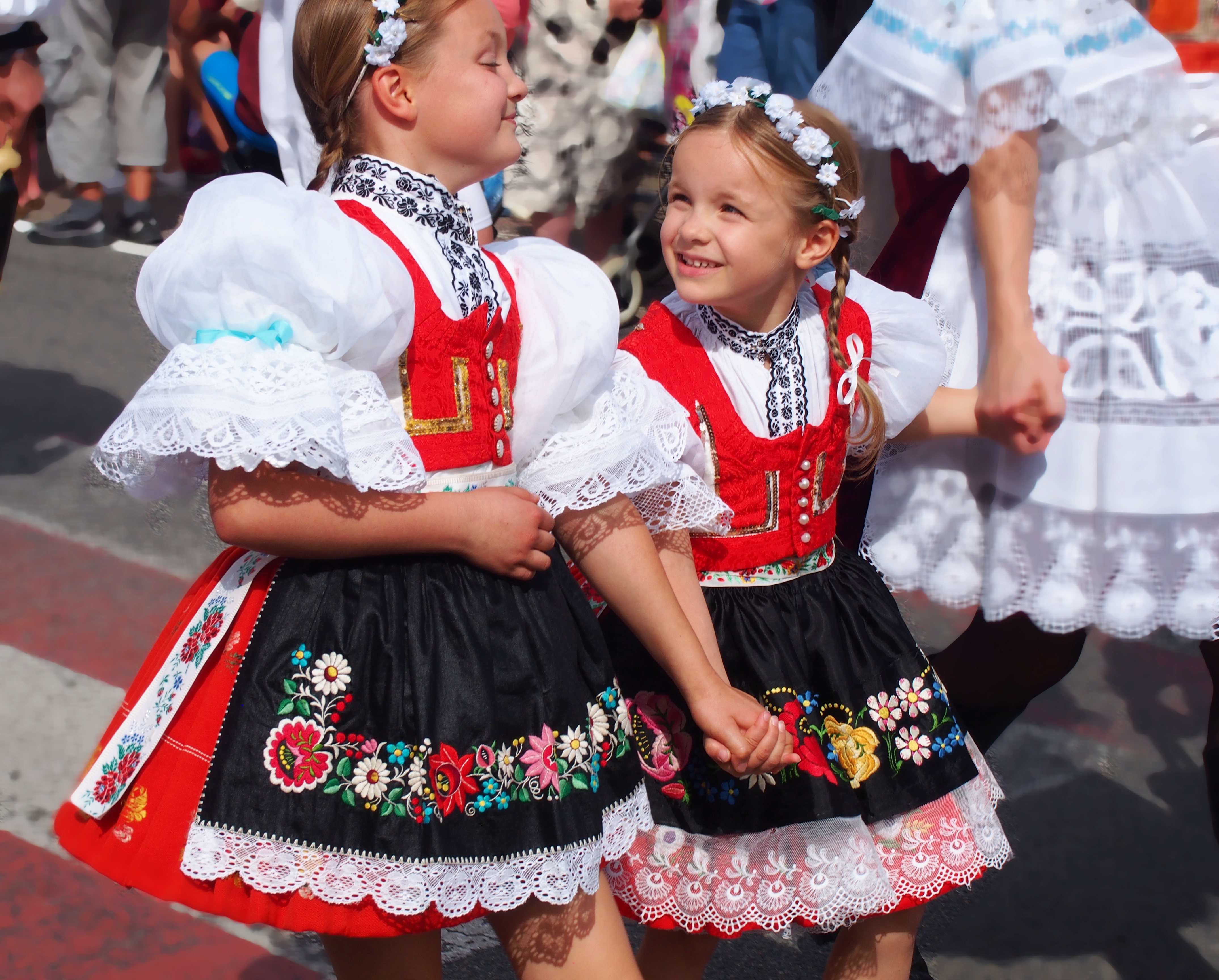
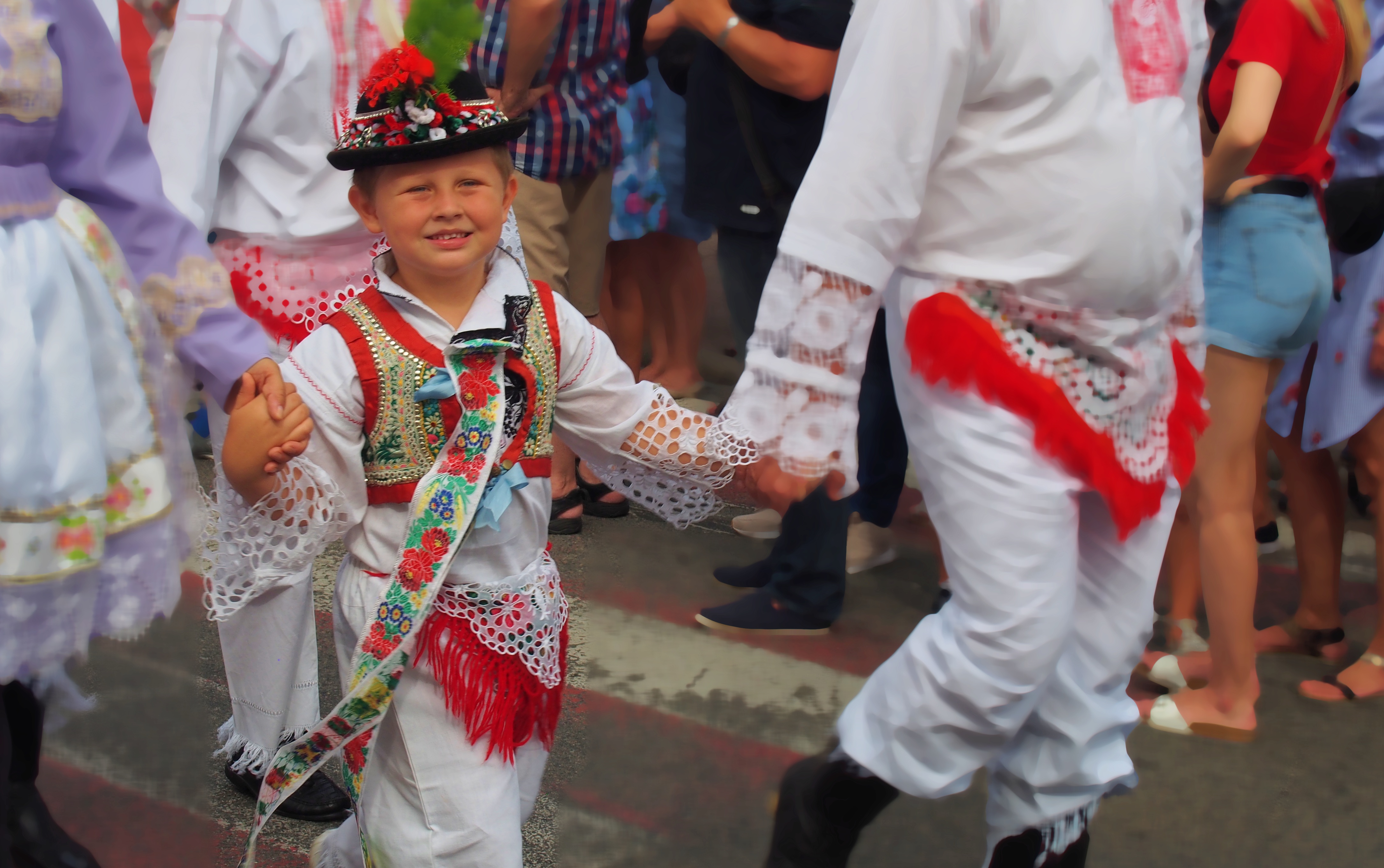
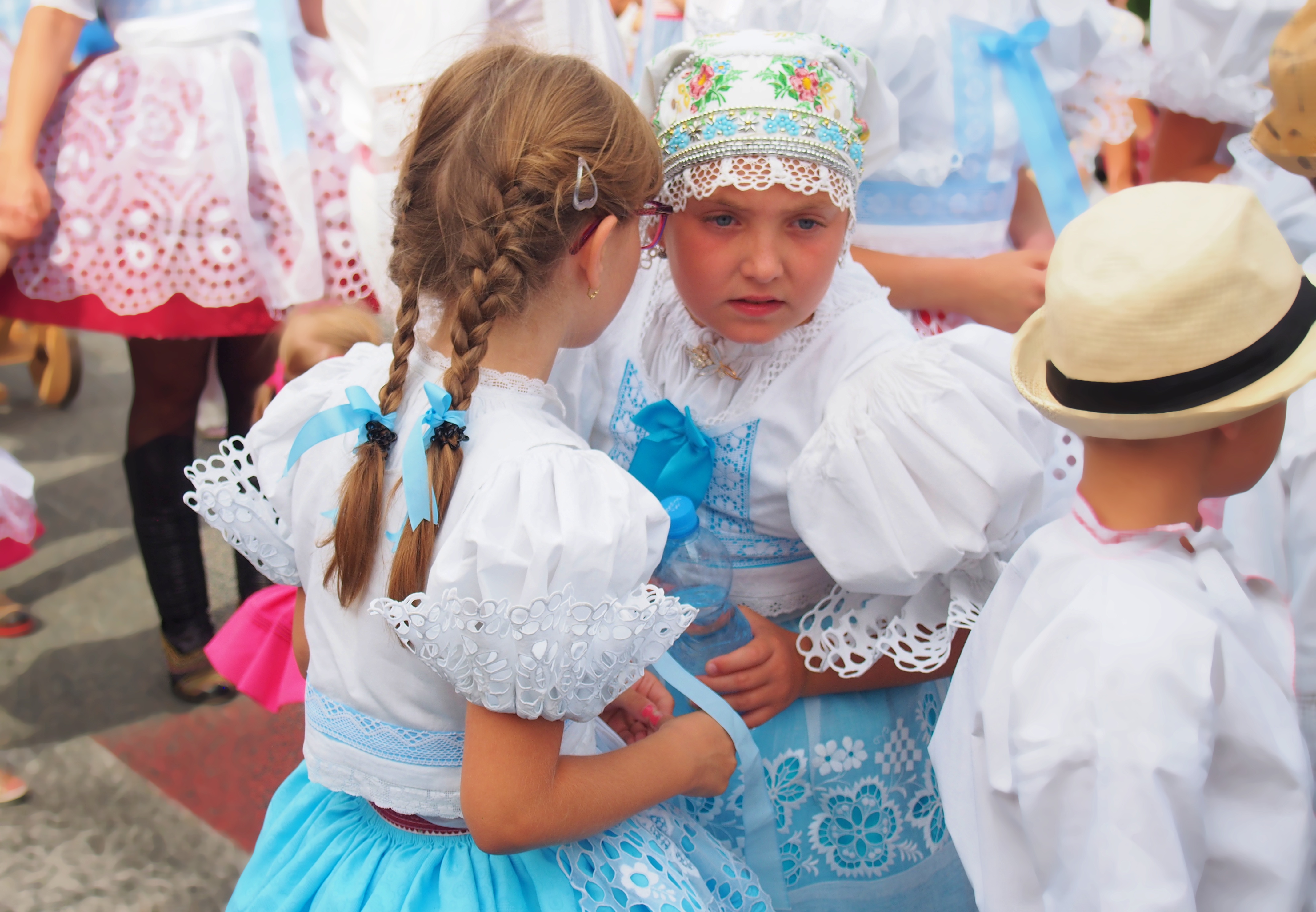

PARADE IN FOLK COSTUMES – I call it the “Parade of Moravian Pride”
“Moravian Slovakia is an inexhaustible treasure trove of the most beautiful costumes.”
The parade lasted about two hours and believe me, even though it was very hot, no one was bored. On the contrary, there was a very friendly and majestic energy. I enjoy the atmosphere a lot – each village proudly performed its costumes, dulcimer music was played on the carriage and the little ones rode in small carts. In short, everyone who has a costume goes to the parade. No one pushes anyone to participate in the parade and it is obvious to all the “costumed“.

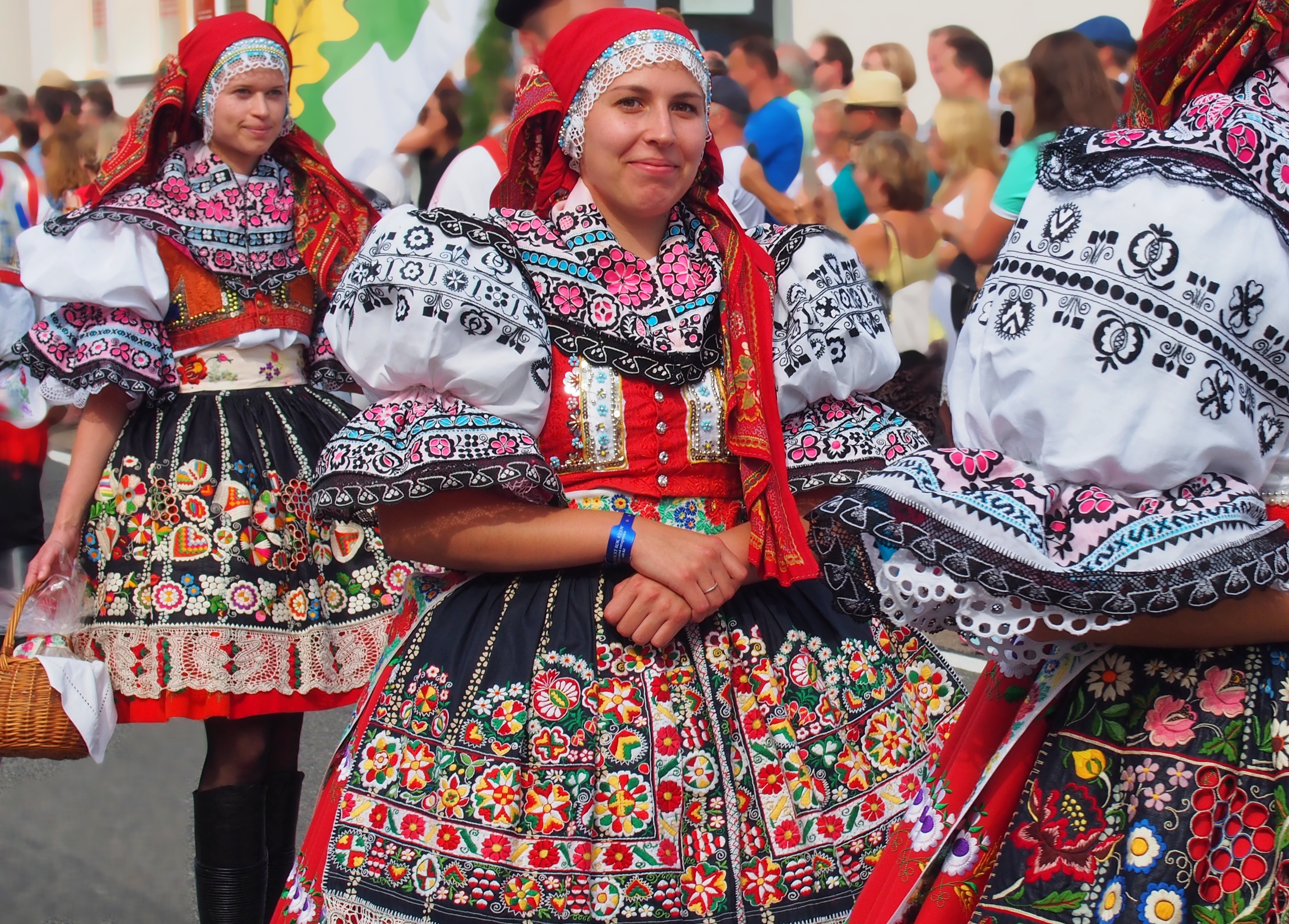
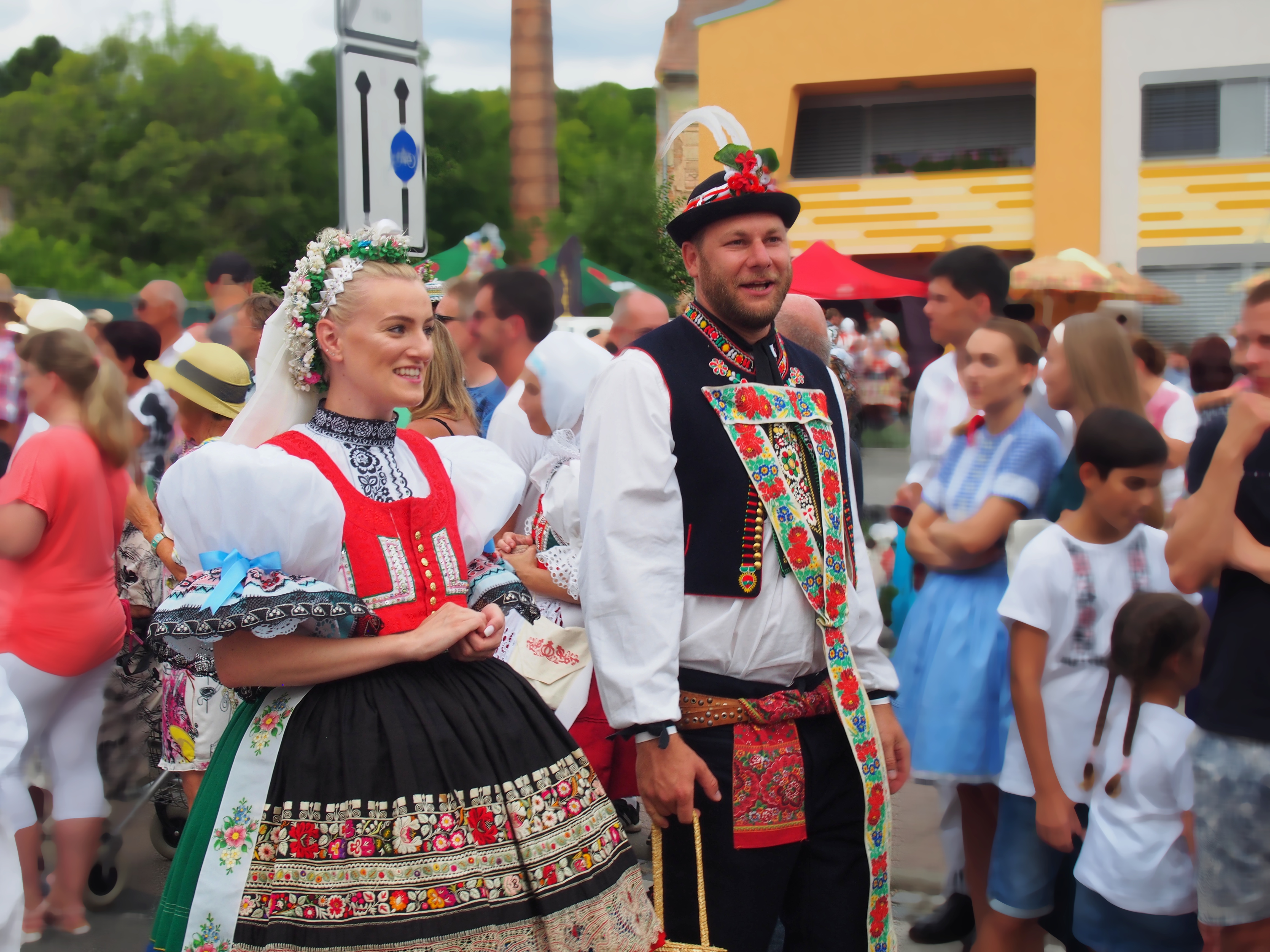

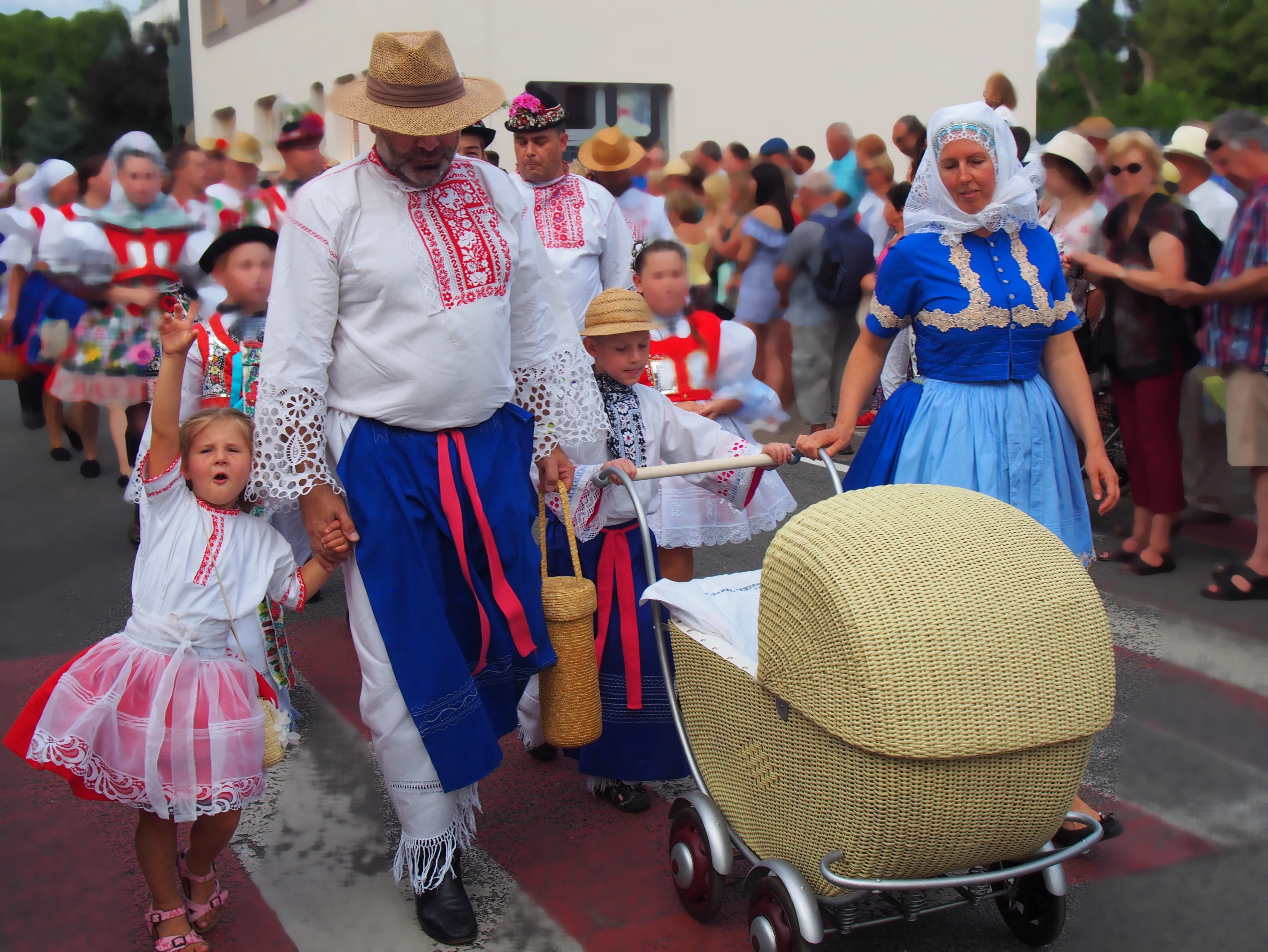
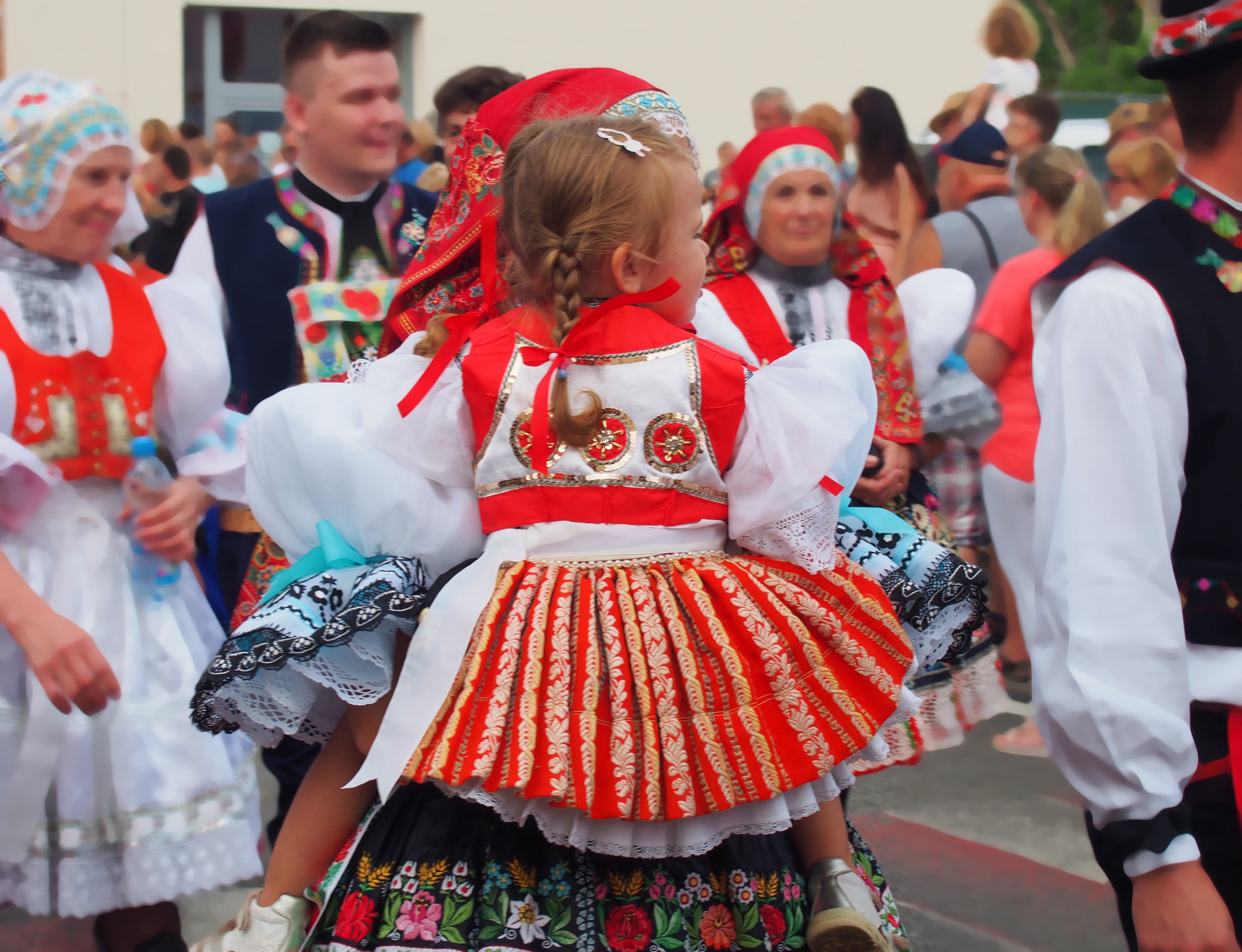


 After Kyjov, 3,000 costumed from 46 villages passed, sometimes accompanied by wind or dulcimer music.
After Kyjov, 3,000 costumed from 46 villages passed, sometimes accompanied by wind or dulcimer music.
FOLK FAIR – TRADITIONAL HANDRAFT PRODUCTS WITH FAIR PROGRAMME
The folk fair was again full of attractions, flavors, aromas and beautiful goods.
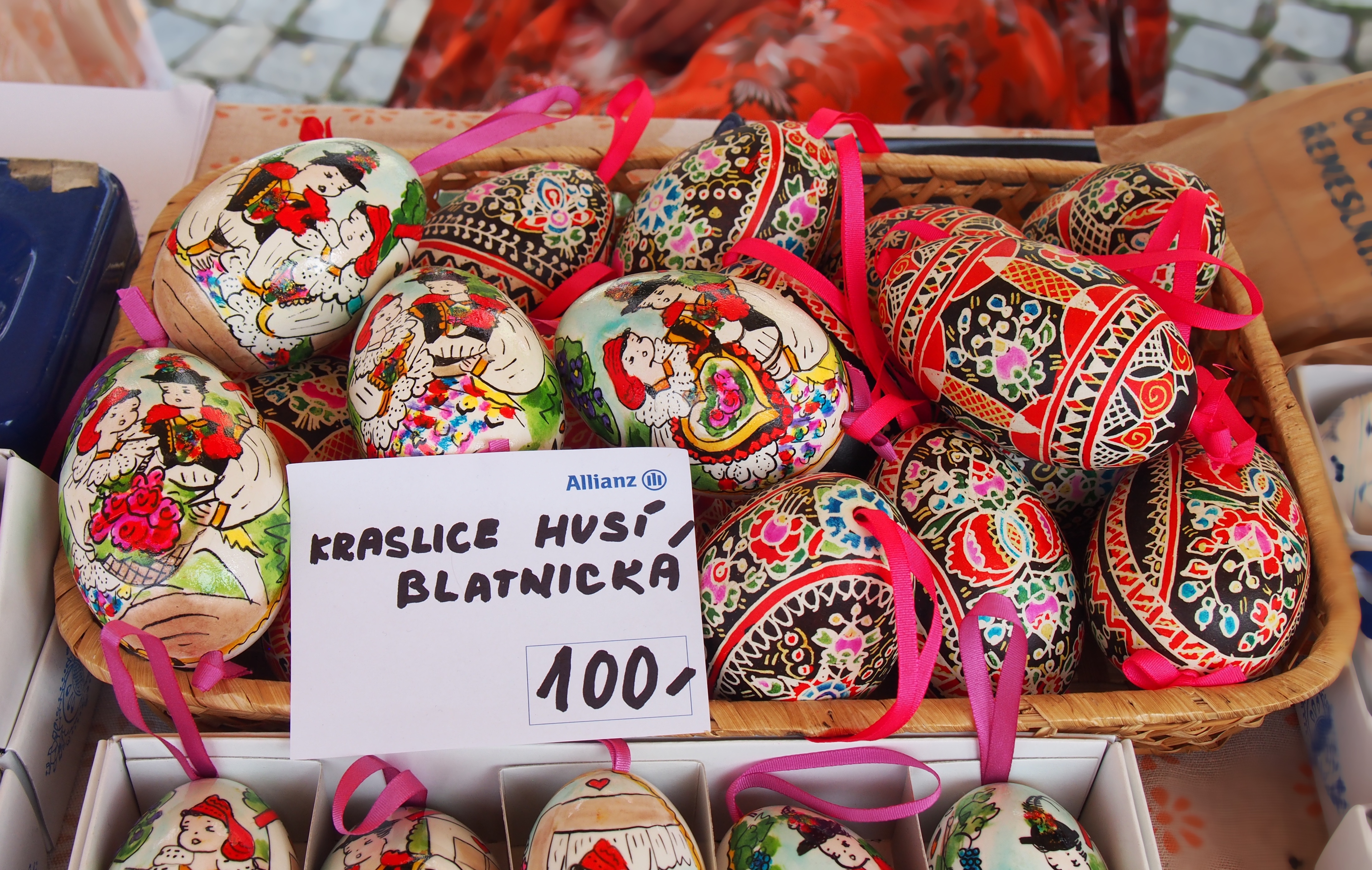
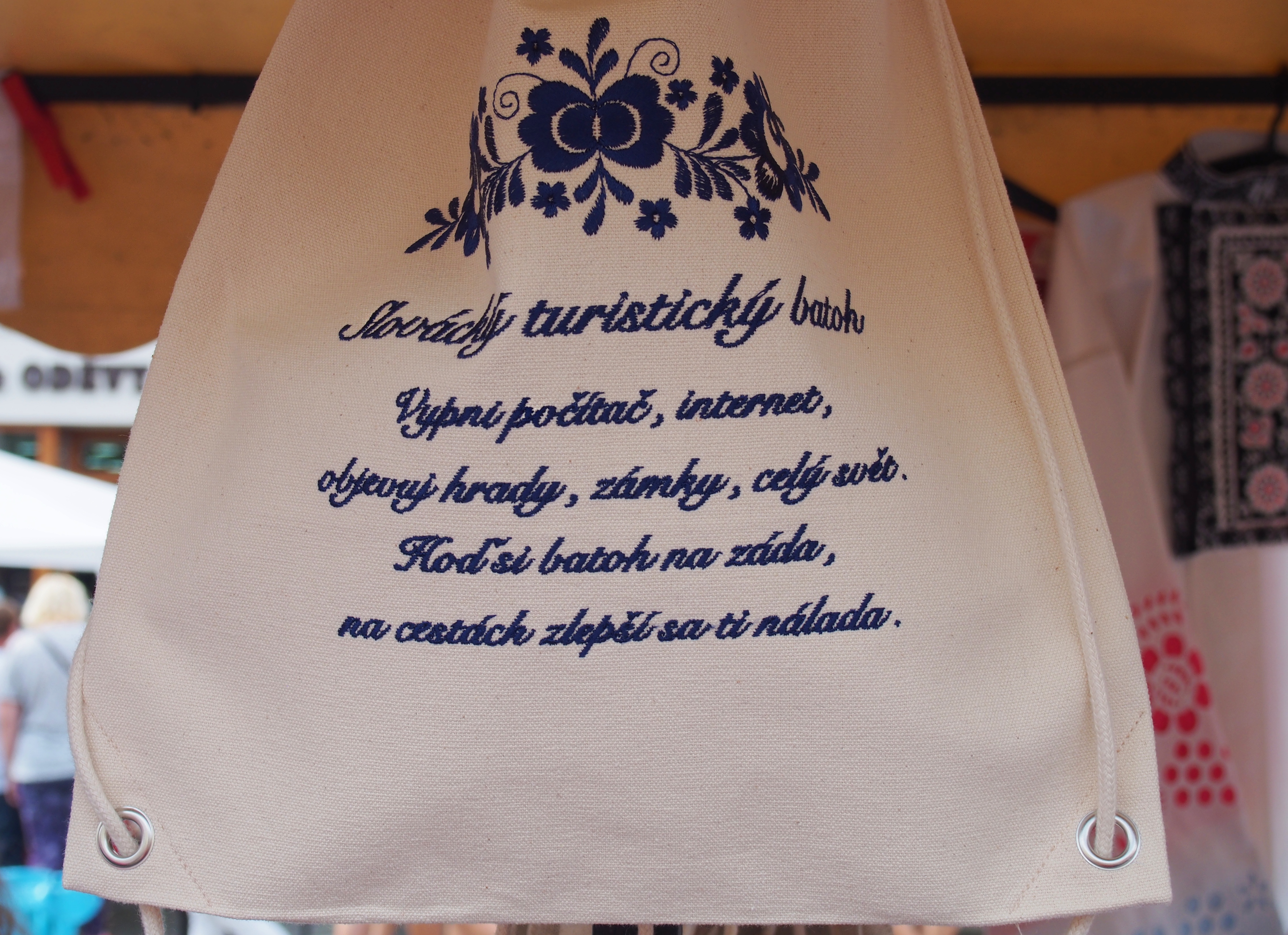
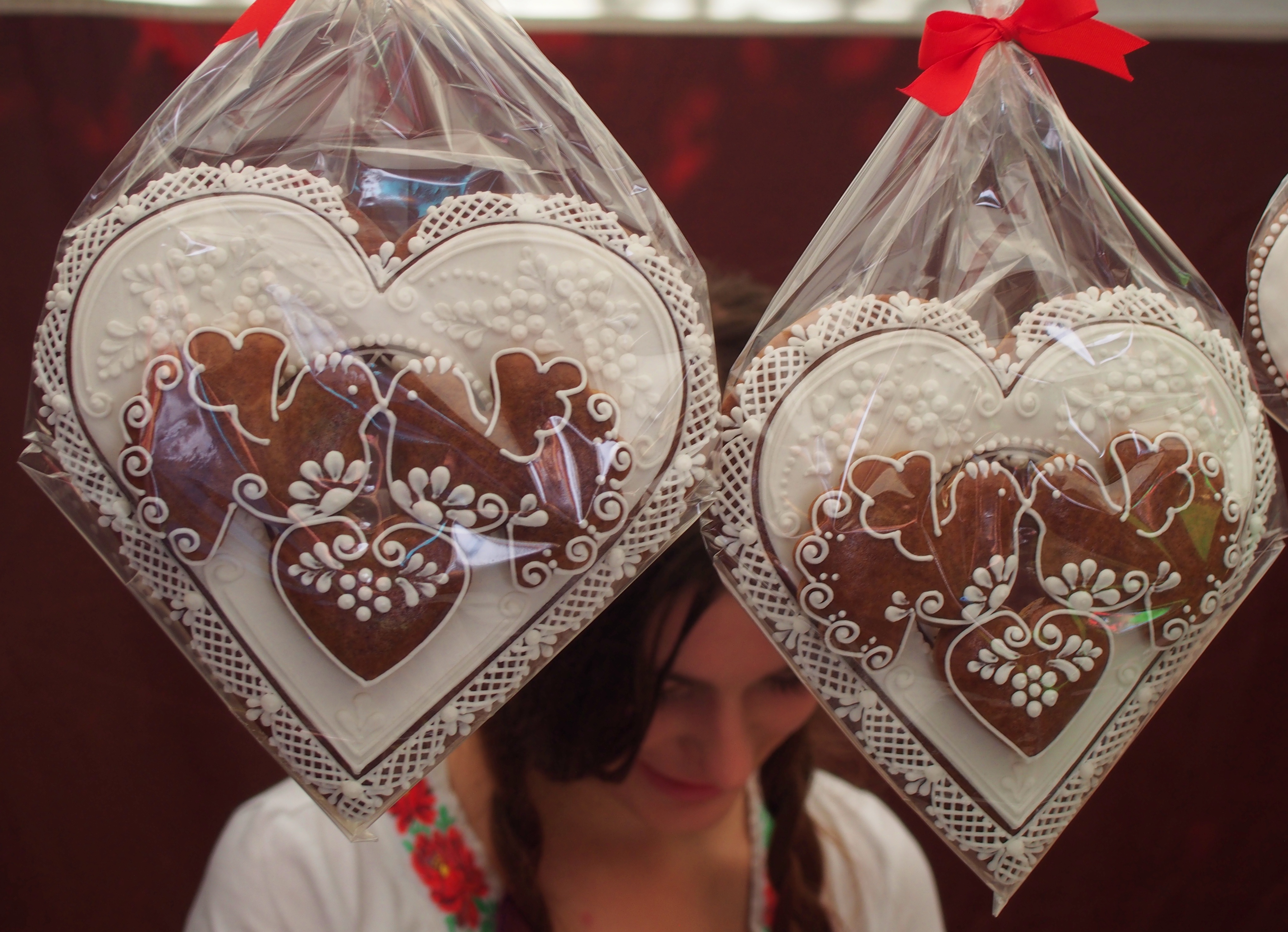
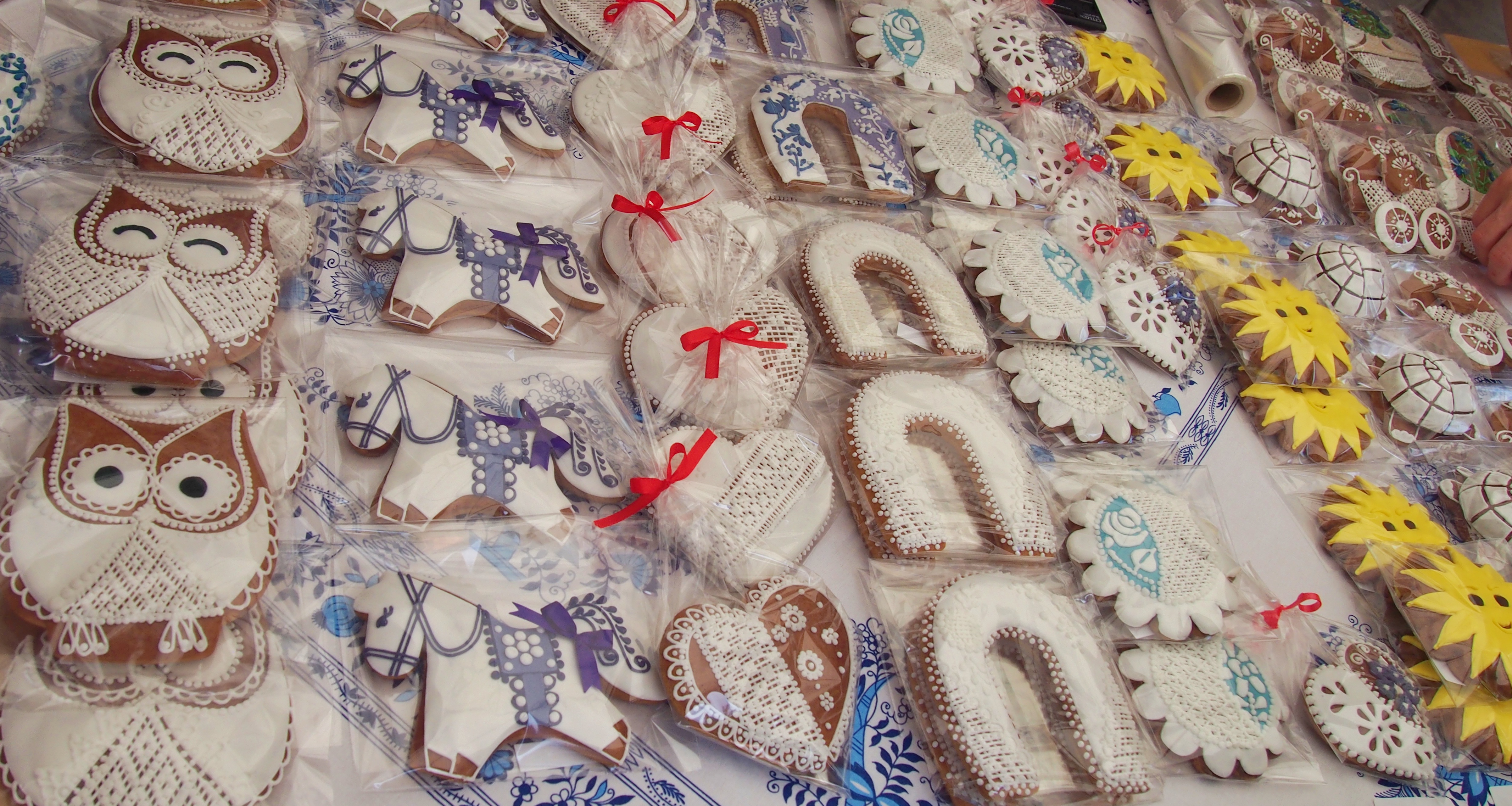




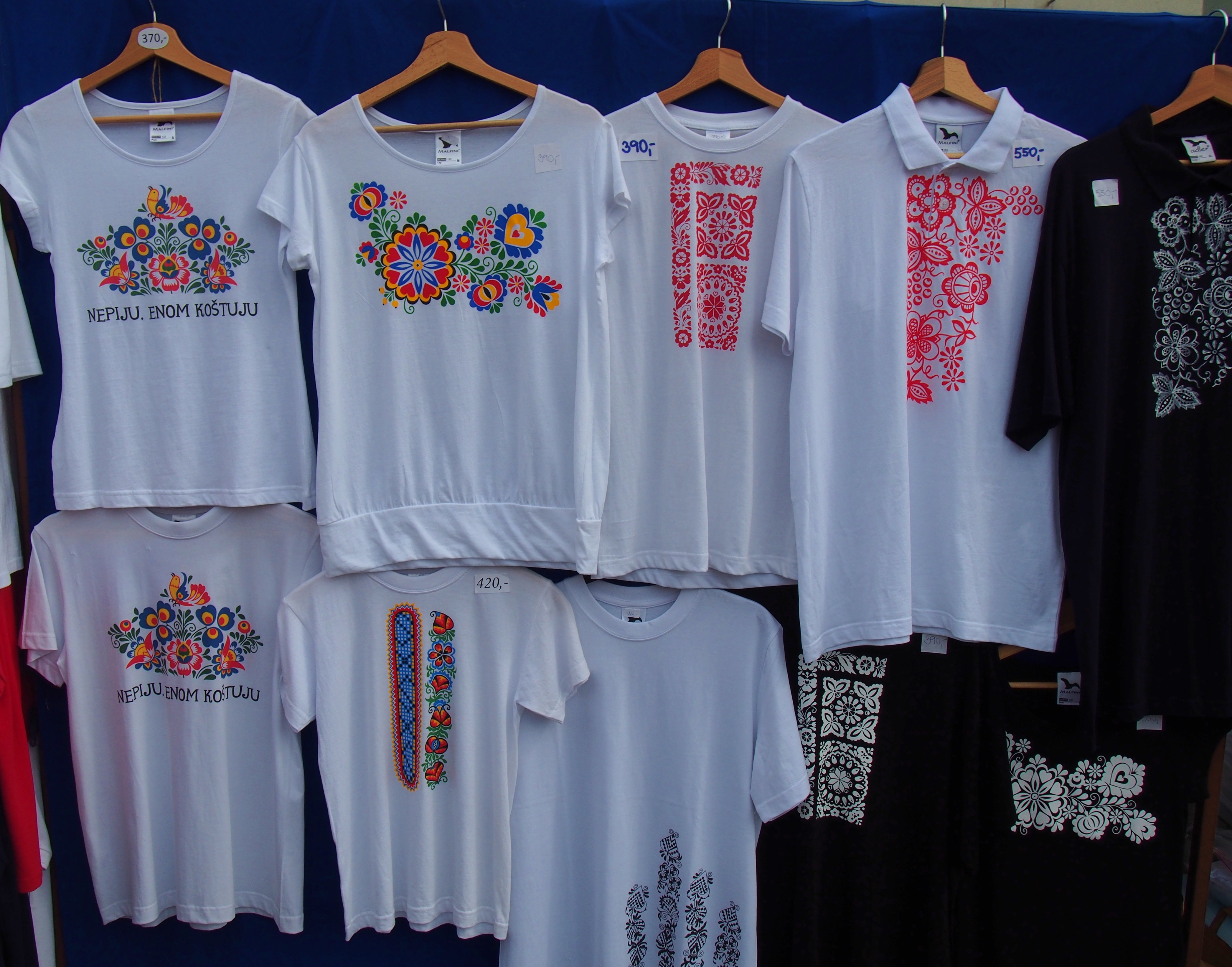

THE CUISINE OF SLOVÁCKO
Slovácko is not just a region of delicious drinks as plum brandy, wines and slivowitz. You can simply enjoy the local cuisine! I have to admit that I know a lot of goodies more from childhood and I haven’t had them for a long time. And I don’t think today’s kids know any goodies at all.

“Beleše” are pancakes that actually need just a little flour and yeast, time, heat and work. They can be toasted to dry on a stove or pan, but they could also be fried. “beleše” from our grandmothers’ kitchen smelled of the Moravian countryside and old times, but also home-made jam and poppy seeds. “Slovak’s patenty” are a sweet and popular specialty. It is actually a pancake made of dry-baked potato dough, filled with poppy seeds and jam. After frying, the pancakes are smeared on both sides with lard. The filling is made of plum jam and poppy seeds, rolled up in a roll and sprinkled with sugar on top. I tasted this goodness for the first time at the chateau in Milotice, where I accompanied when I was 17 years old. It was originally a dish of the poor, the pancakes were fried to dryness on a stove. People used raw materials, which they mostly grew at home.
“Slovak’s patenty” are a sweet and popular specialty. It is actually a pancake made of dry-baked potato dough, filled with poppy seeds and jam. After frying, the pancakes are smeared on both sides with lard. The filling is made of plum jam and poppy seeds, rolled up in a roll and sprinkled with sugar on top. I tasted this goodness for the first time at the chateau in Milotice, where I accompanied when I was 17 years old. It was originally a dish of the poor, the pancakes were fried to dryness on a stove. People used raw materials, which they mostly grew at home.
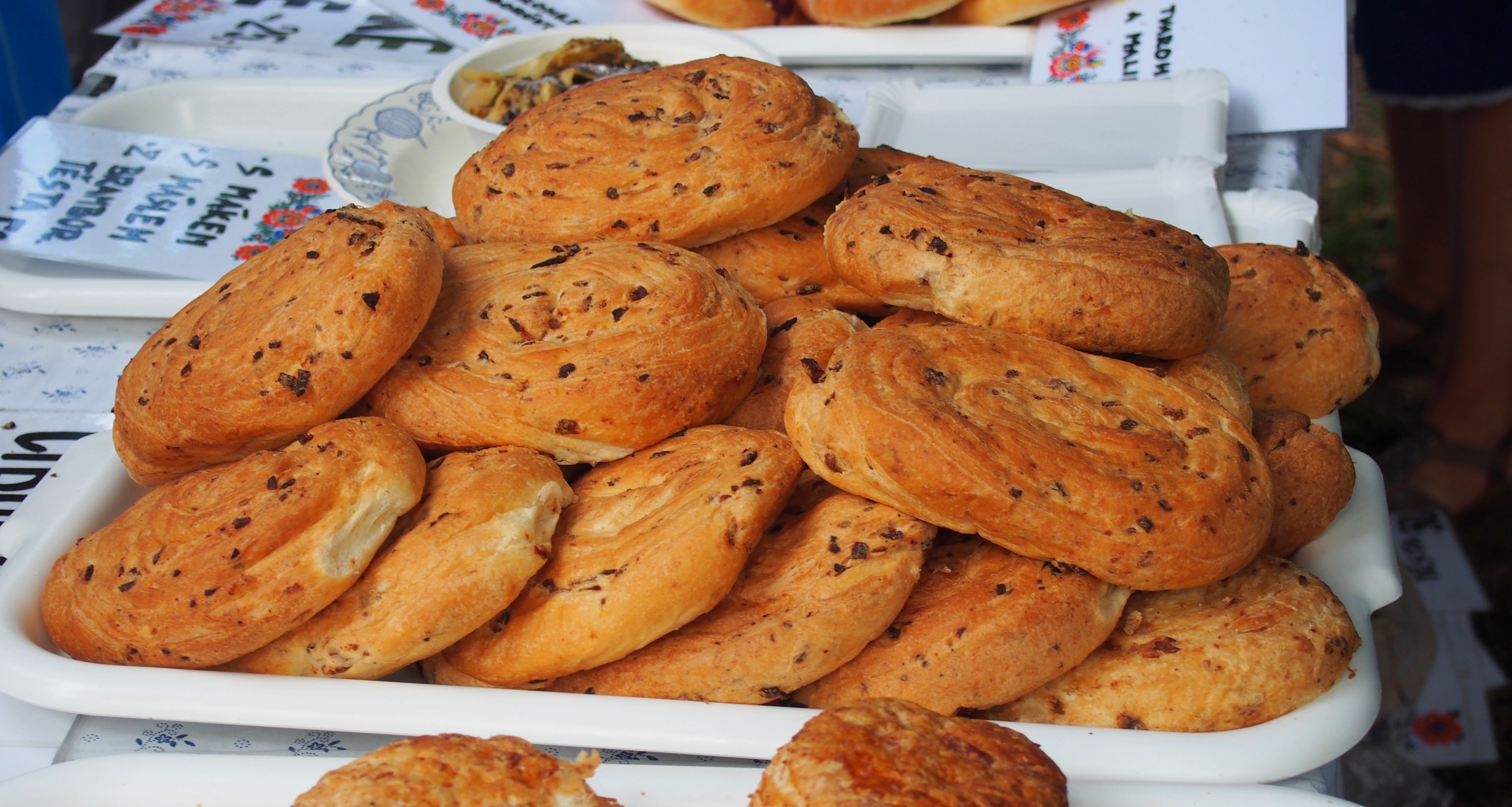
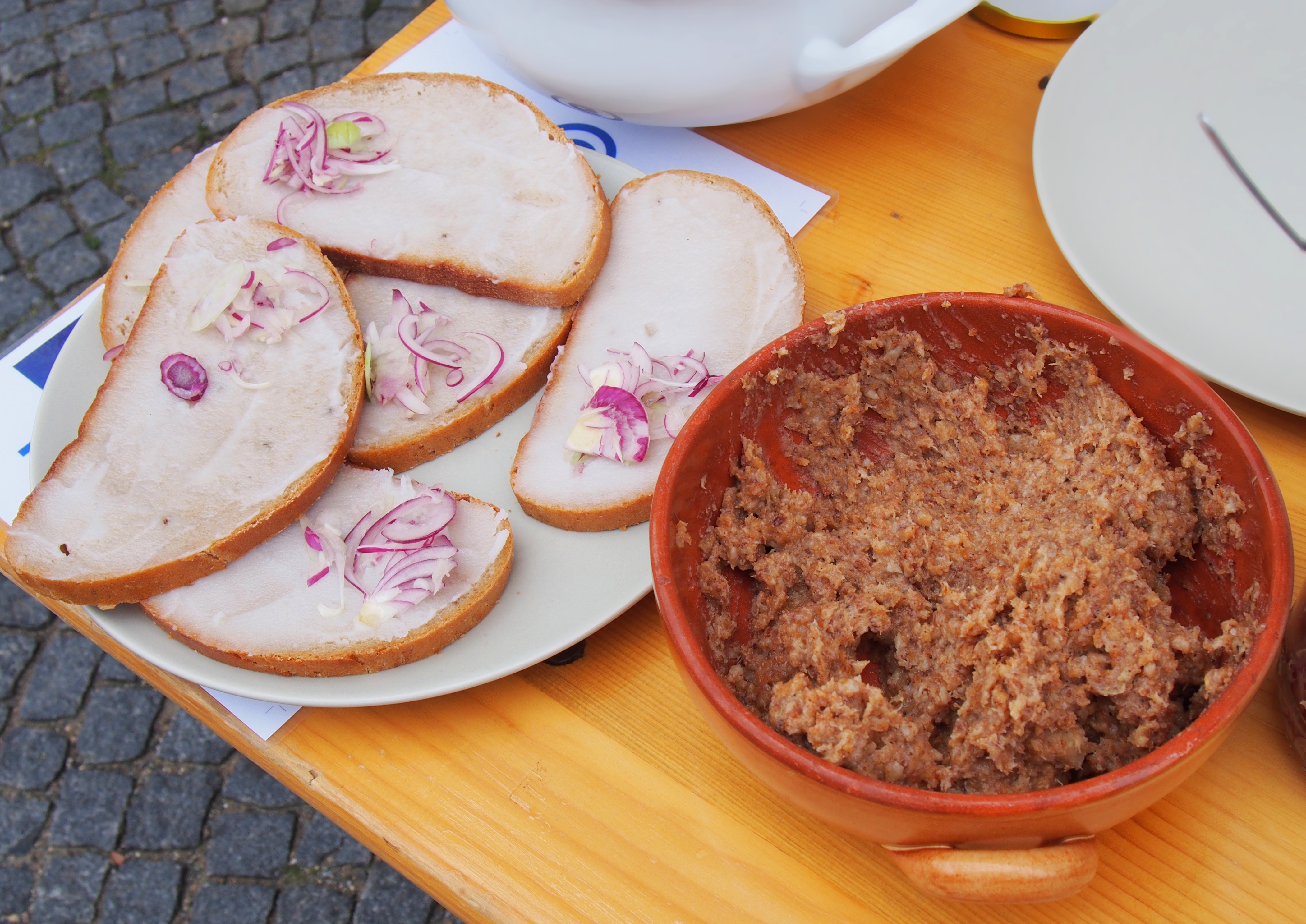
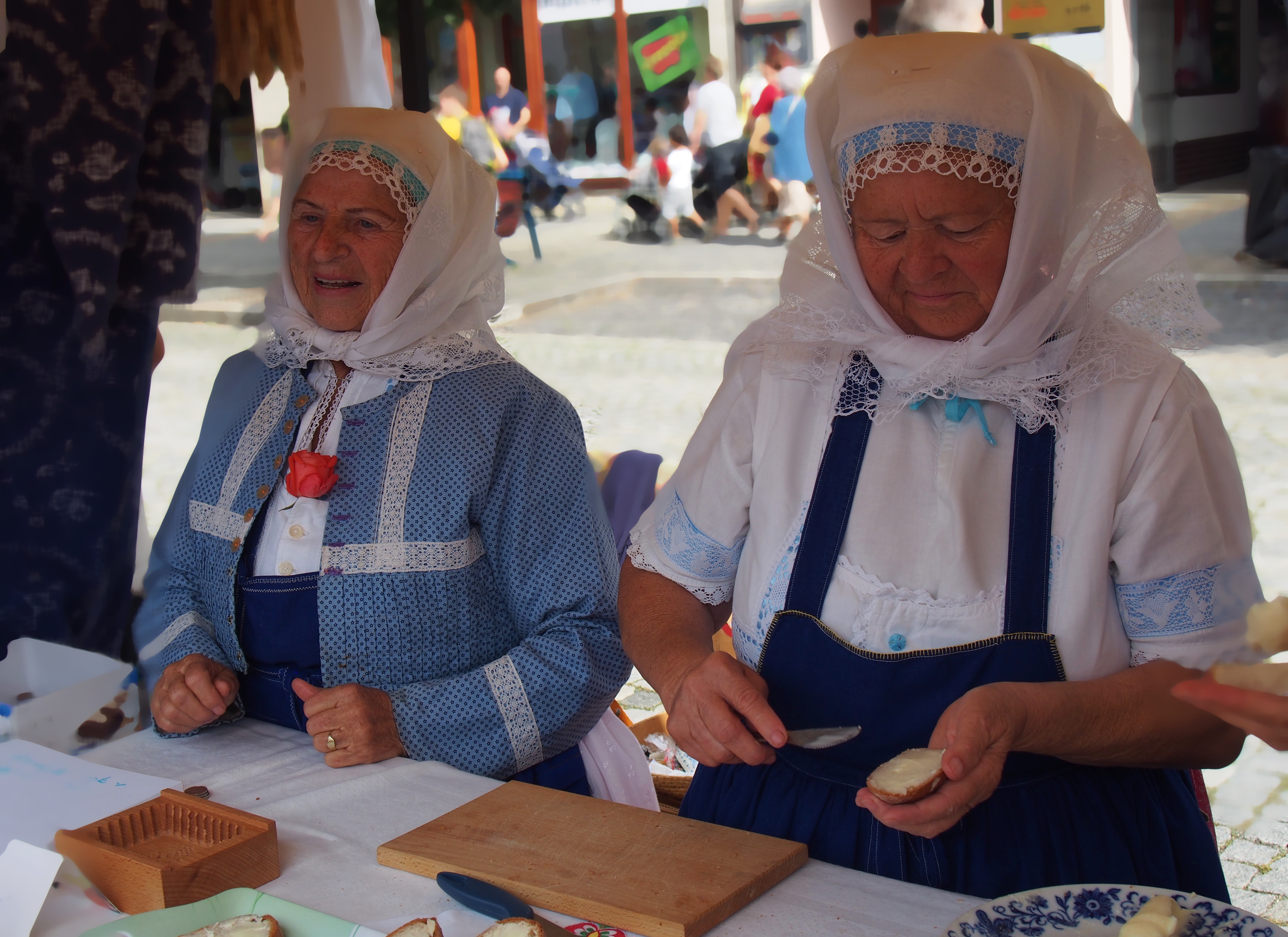
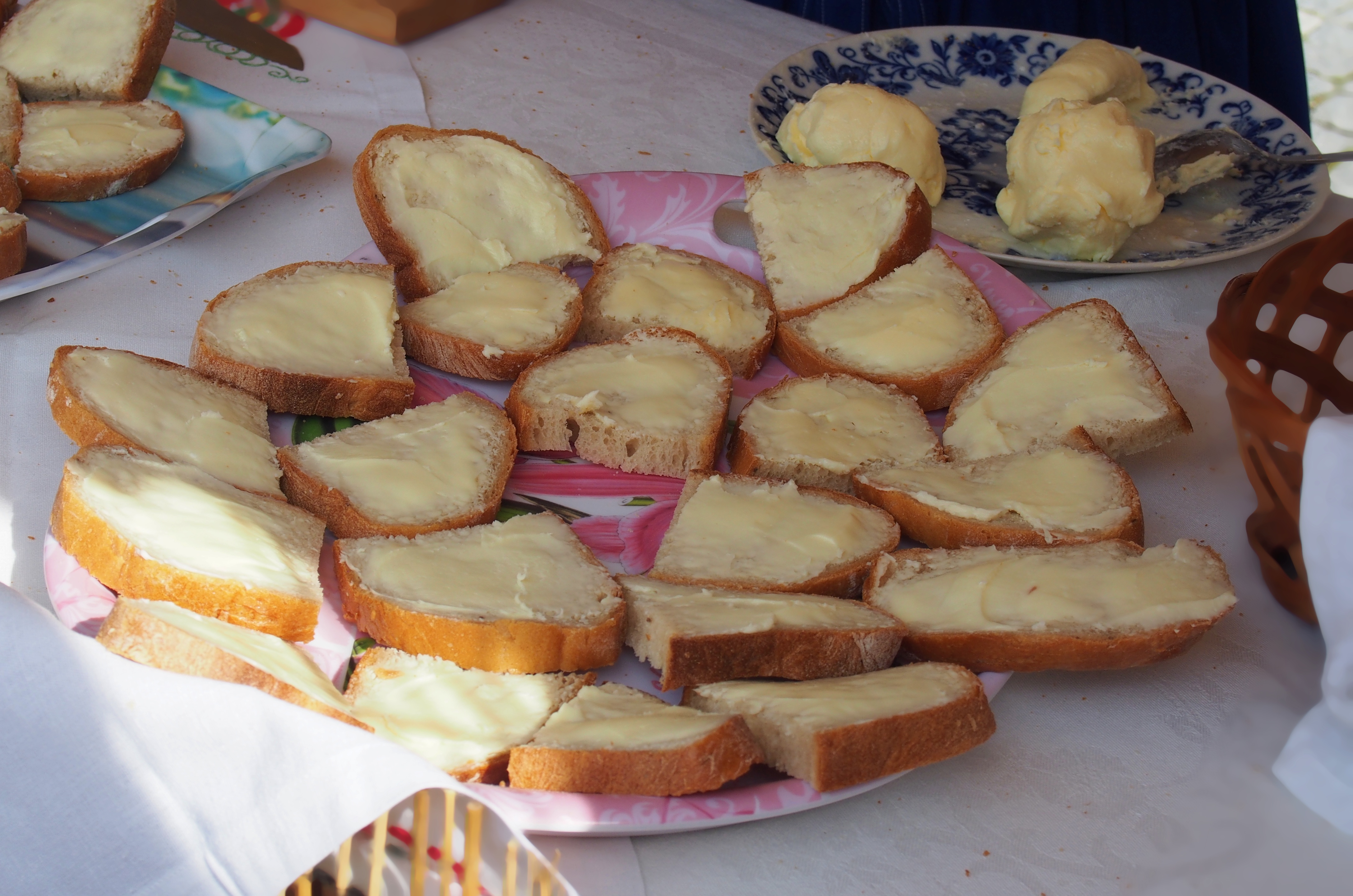
WHOSE IS THIS SONG?
Let’s face it. I can’t sing. 🙂 Ours preferred to force me to play the flute so as not to give screams. But that doesn’t change the fact that I like to listen to Moravian songs and I like to join the noisy crowd of singers. At least my singing will be lost there. And as far as dance is concerned, it is not above the “Skočná“. And I also really like the “Dance of Recruits – Verbuňk“, which is a male dance, composed of pre-singing and subsequent independent “cifrování” of dancers.
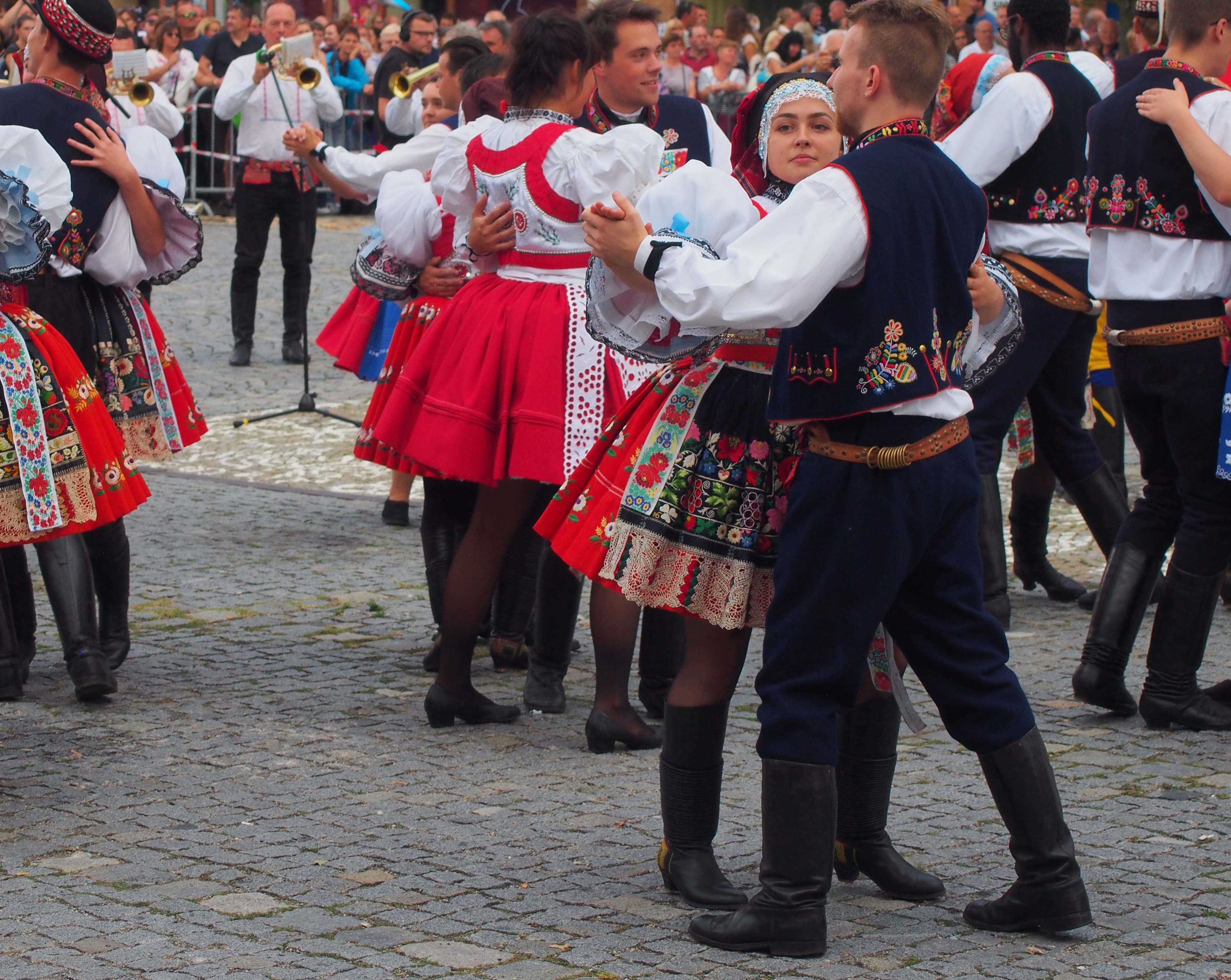
ABOUT LOVE
We wouldn’t be here without love. It is one of our most expensive jewels. The Klenotnice show focused on the forms and transformations of love. And I have to admit, he completely grabbed my heart. I think it’s nice to pass on the beauty of a folk song to young people in this way.
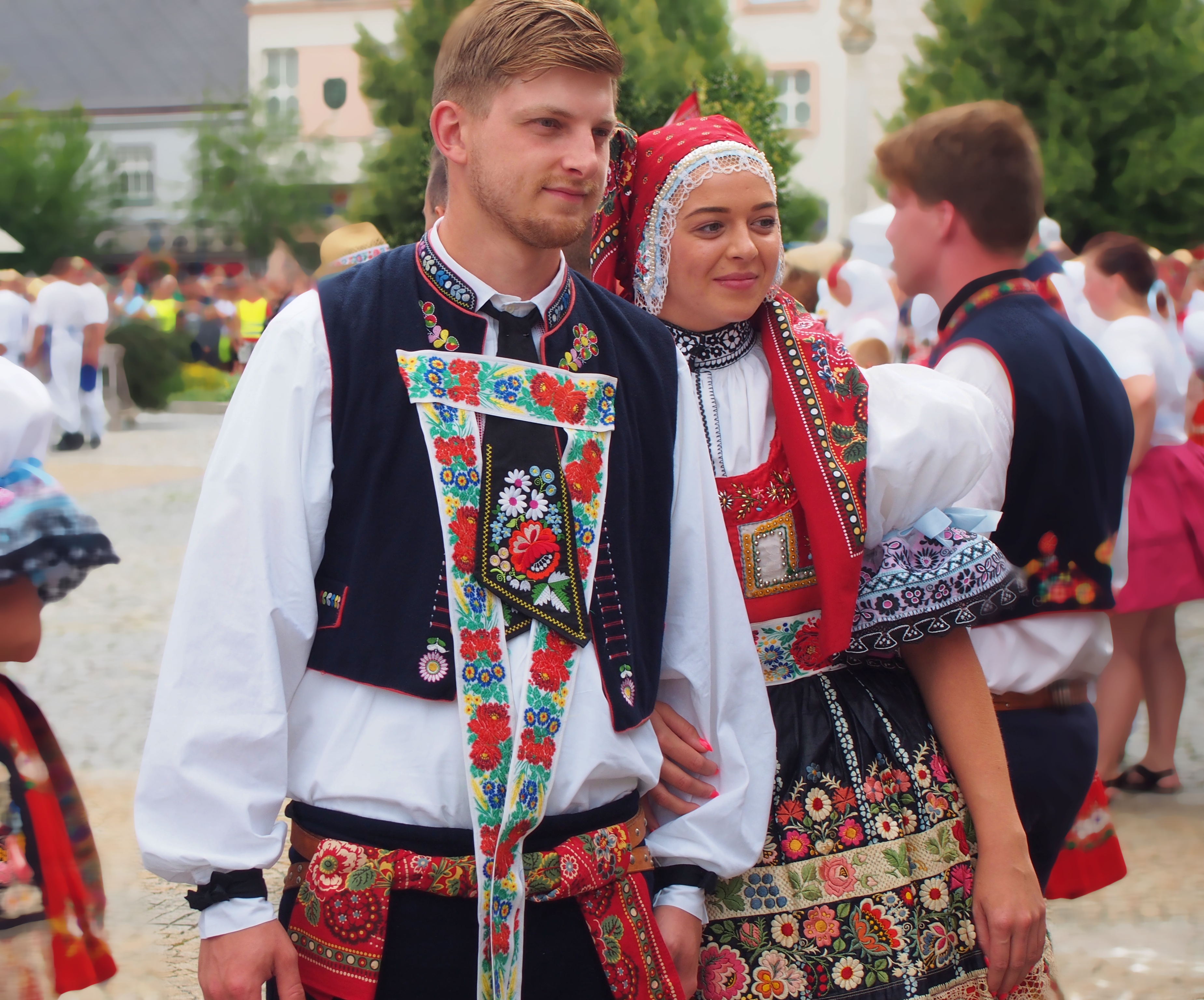
WINE ALLEY
What would a party be without wine? Wine – these are simply emotions. It is said that alcohol cannot be won. Only the Moravians drew. So what are Moravian wines like? Undoubtedly original…

STRRET ART IN KYJOV
I went to the Kyjov dairy as a child on a part-time job and I have fond memories of this time. After all, it was my first money earned. So I was very interested in this original idea of placing a painting by Lenka Jurečková on this dilapidated building. The reason was not to cover up an ugly space, no “Sun and Hay” takes place, but simply to create something interesting. It was a great challenge for Lenka to create a motif of Kyjov dancers in such a large space. She created the painting directly in front of the spectators and finished it from a scaffolding right on the premises of the Kyjov dairy. I was very happy to be able to see the author at work in the early evening, when the official opening of the celebration took place. It used more than 5 liters of paint for the painting. The colors had to withstand adverse weather conditions. The city of Kyjov even announced an art competition on the theme of the Moravian Slovak Year, in which schools from the region took part. The expert committee selected 15 works by students who redrawn their works on the same material. And so a really beautiful country gallery was created.



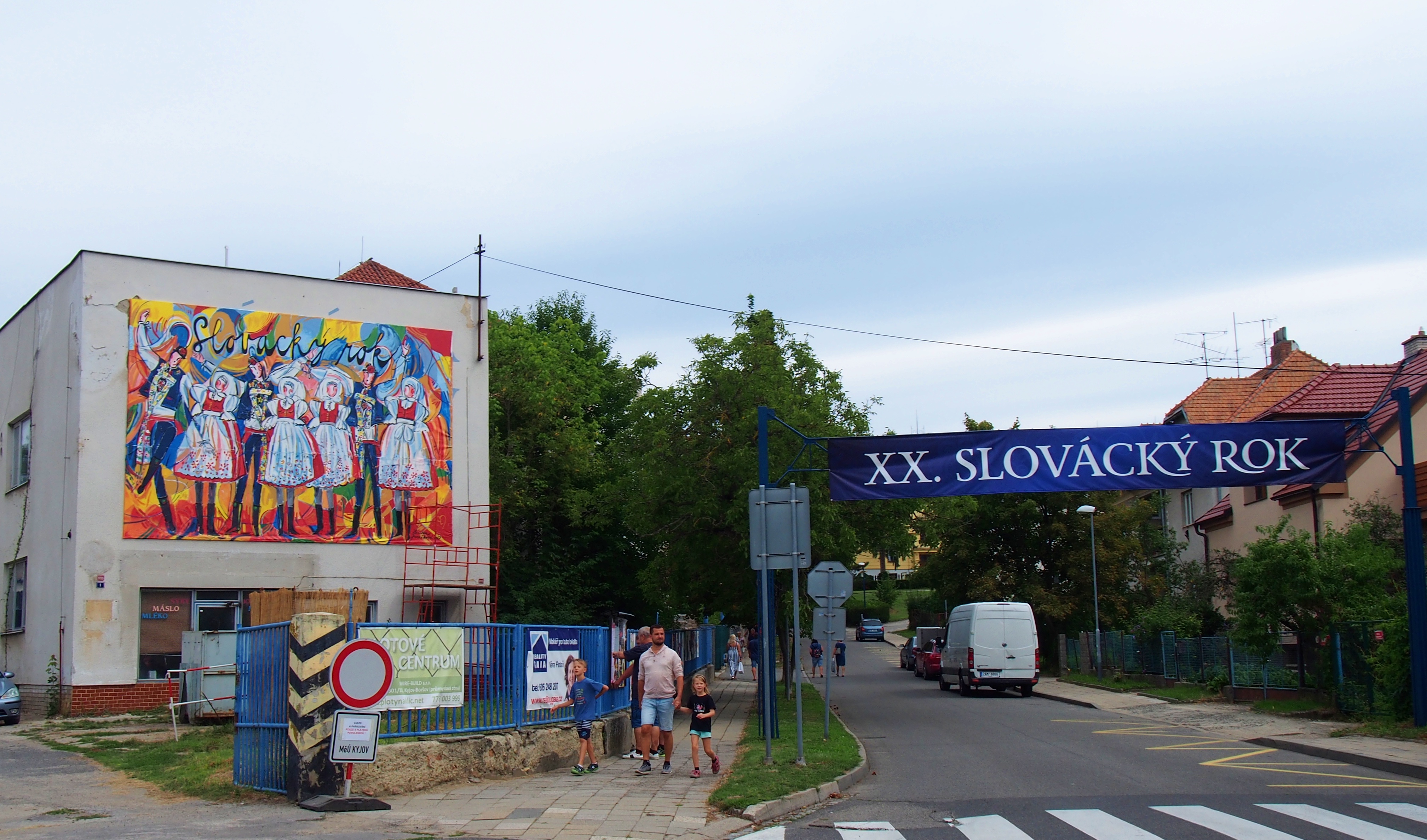
THE KYJOV GATE, NICELY PAINTED
Part of the Moravian Slovak Year was also a painting workshop in front of the grammar school building.


NEPLECHOV
The world belongs and will belong to children, and our Kyjov park also belonged. I give a thumbs up for this idea. I think the kids enjoyed it more this year than in previous years. There were many entertainment venues, creative workshops and competitions in the park, which were accompanied on the stage by children’s ensembles and fairy-tale theater performances. The children were lined up on straw bales, they could roast potatoes, try out old crafts.

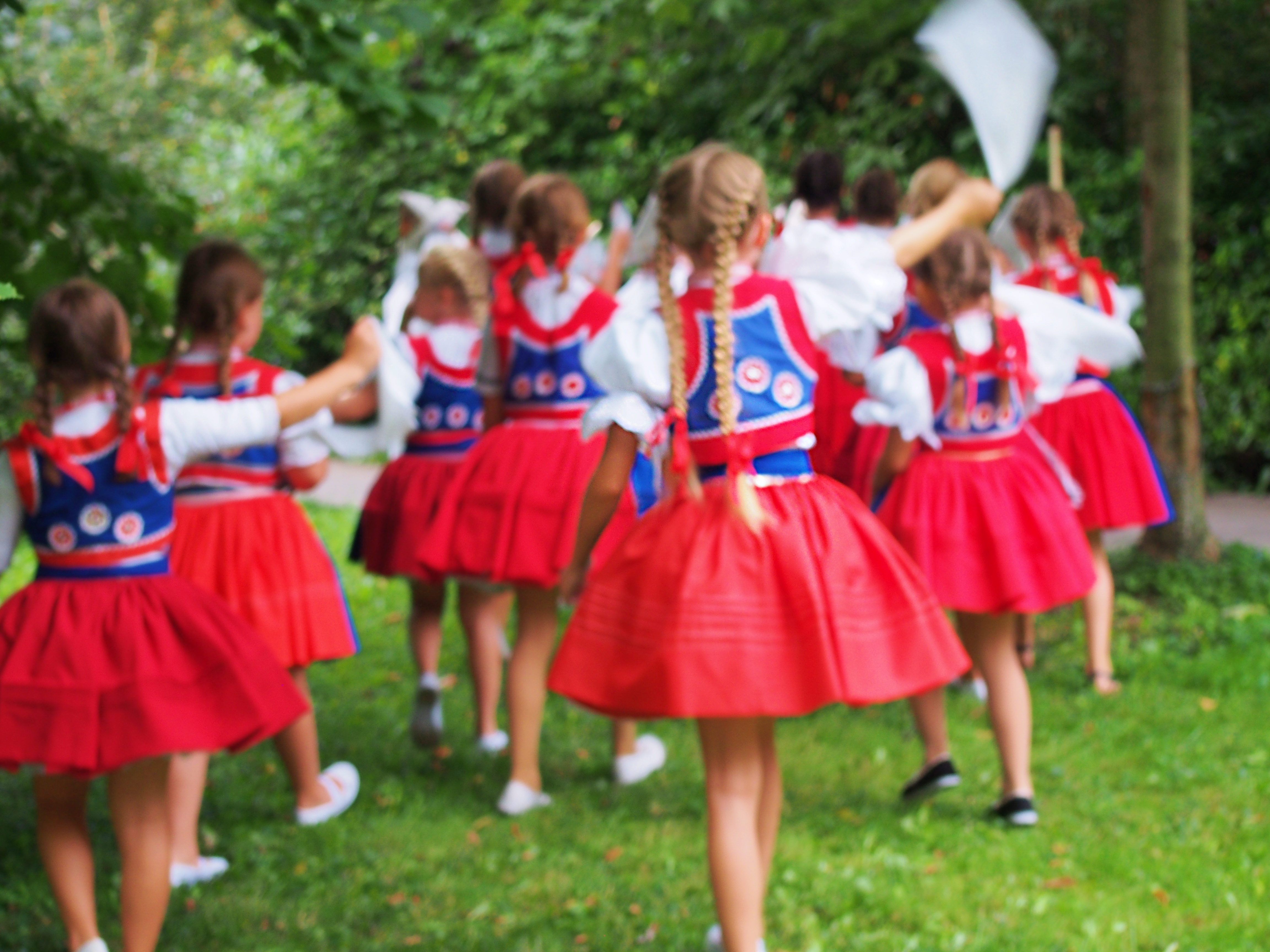
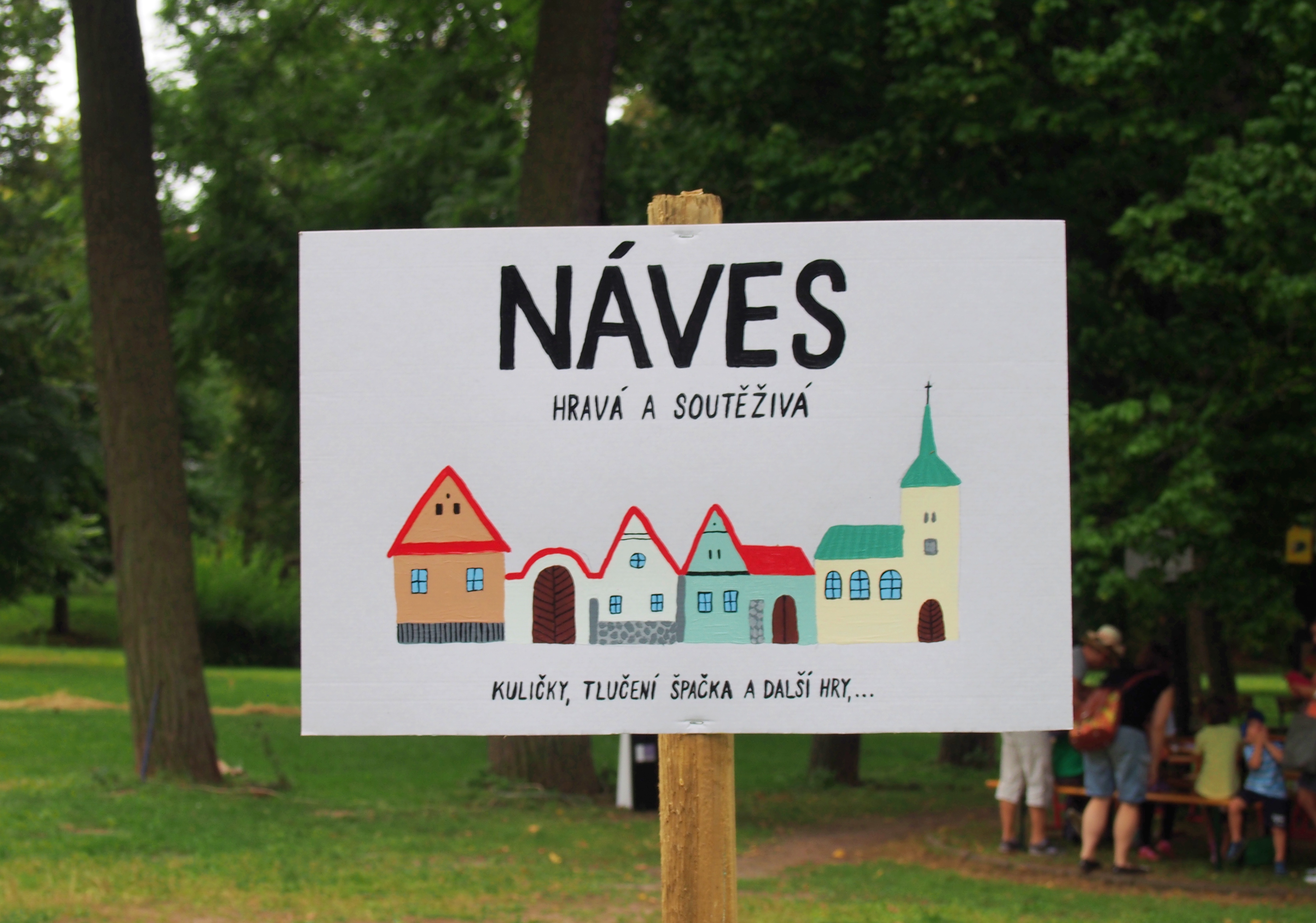
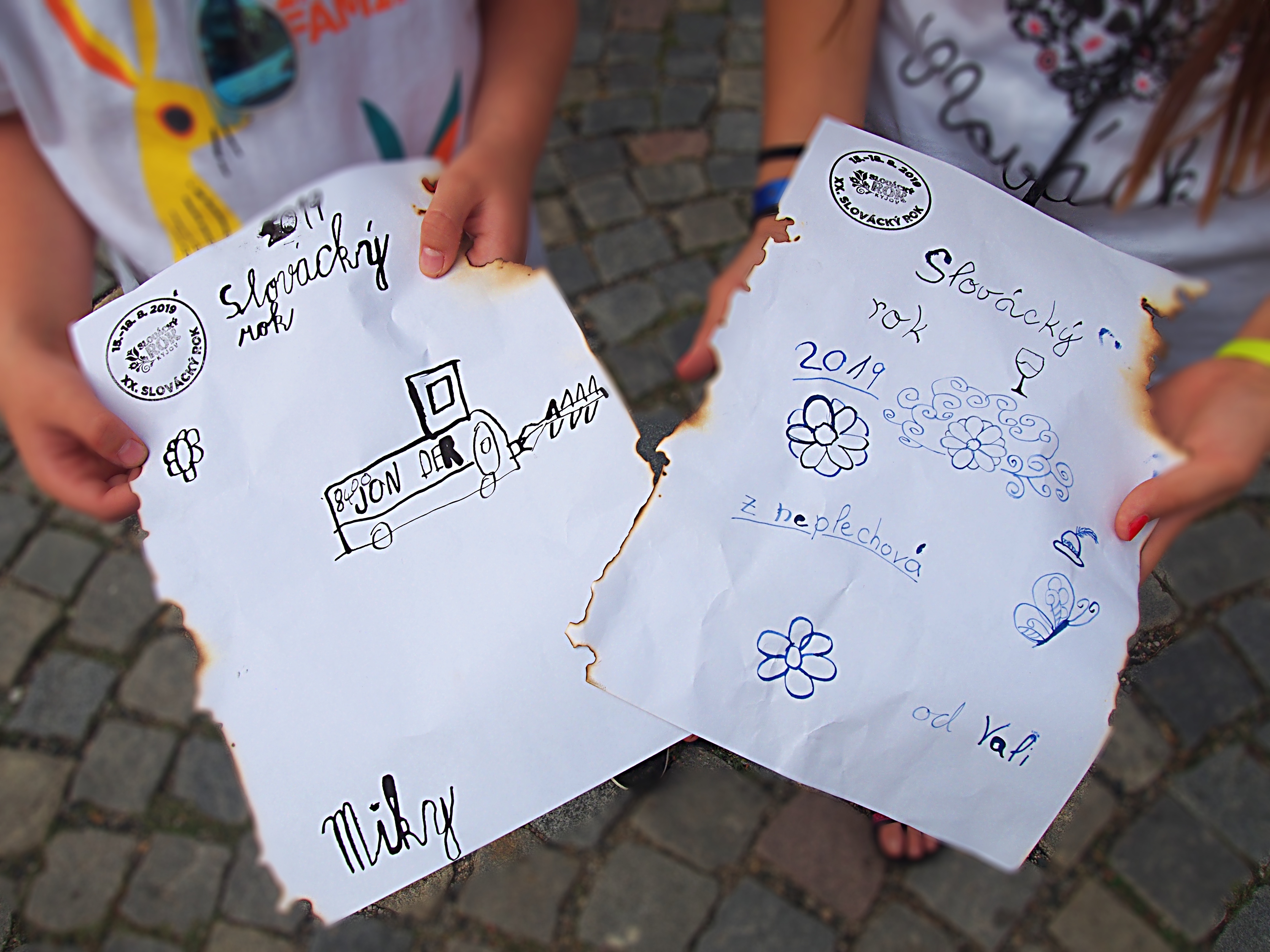
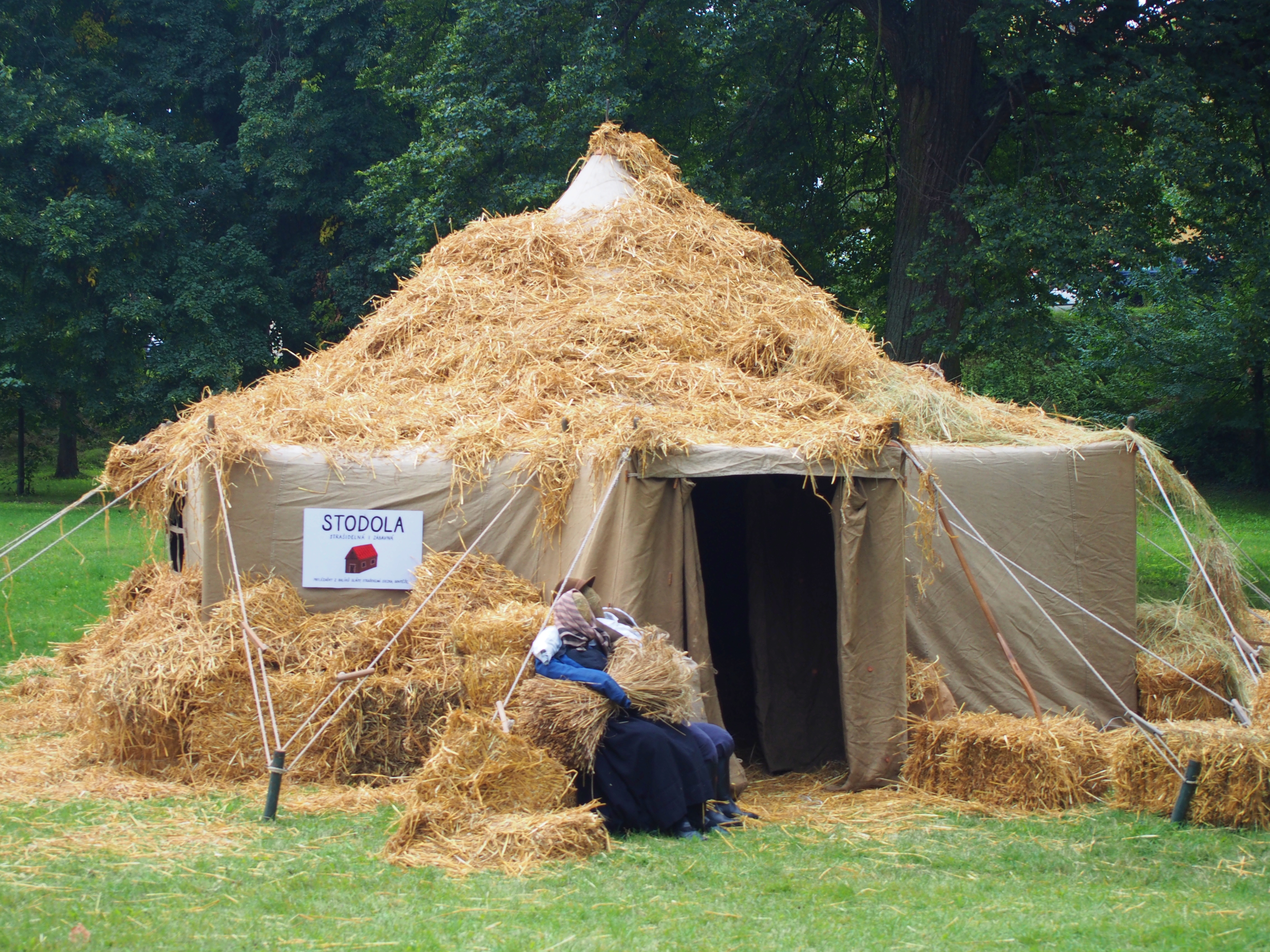


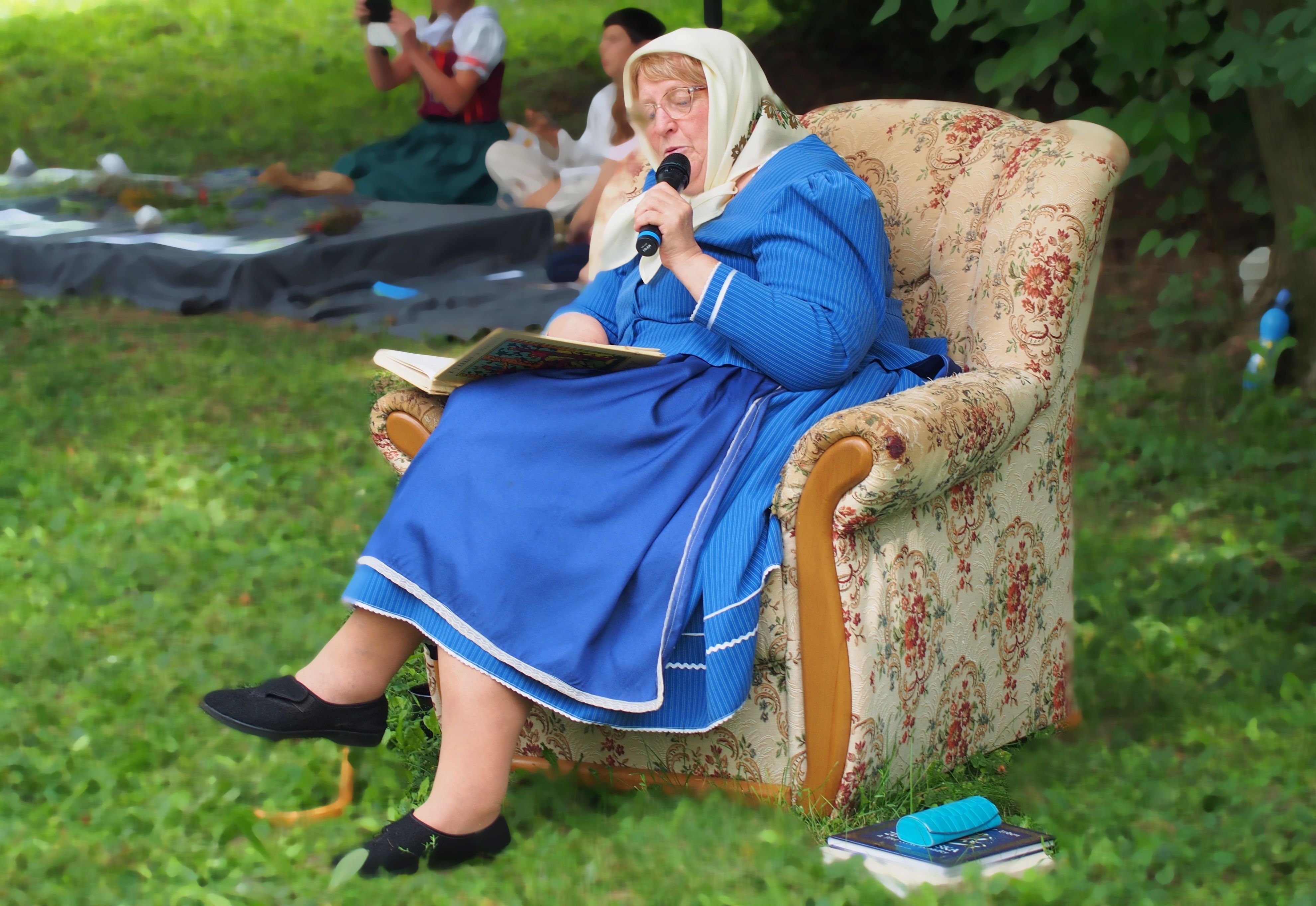
DURING THE MORAVIAN SLOVAK YEAR, I ALSO VISITED THE FOLLOWING TWO EXBITIONS:
PRAISE FOR MIROSLAV TICHÝ’S FOLLY
“We all knew him and as children we laughed at him and they were a little afraid of him too. He always wore ragged black rags, was unshaven, and looked homeless. His hallmark was a camera. He made it himself from cans, glasses, or beer stoppers. He always had it on hand as he walked the streets or lurked at the swimming pool, where he hunted pictures of women. It was a voyeur for me. His brother called him a bug. ” This is my memory of Mr. Miroslav Tichý.

It never occurred to me that this gentleman would one day be so famous that his photographs could be found in the collections of famous institutions such as the Victoria and Albert Museum in London and would be one of the world’s most respected photographers for collectors willing to pay for. majlant. His photographs are original in that many of them look older than they really are. How many times did he not mind at all that he messed up the photos with coffee and most of the photos are scratched and bitten by mice. Many of his photographs are out of focus and overexposed because he usually pressed the shutter button without looking through the viewfinder.
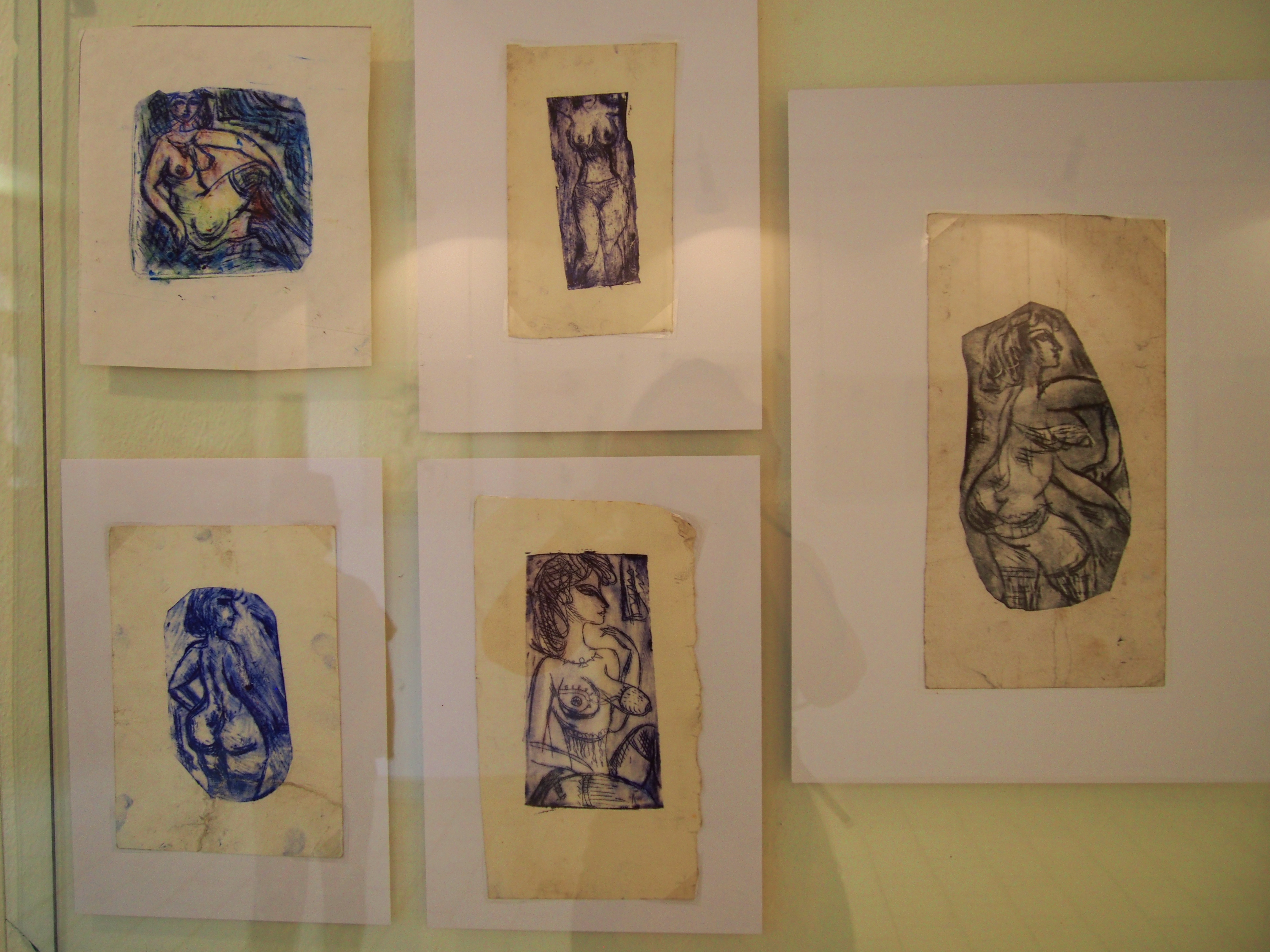
He divided the professional public into two camps. Some consider his work to be extremely authentic and scandalous, while others attribute his fame to a mere cleverly managed curatorial manipulation. And I lean towards the first, because I don’t know anyone who would make Kyjov women famous all over the world like Mr. Tichý. I believe that after new facts came to light, almost every Kyjov women certainly wanted to be in at least one of the photos.
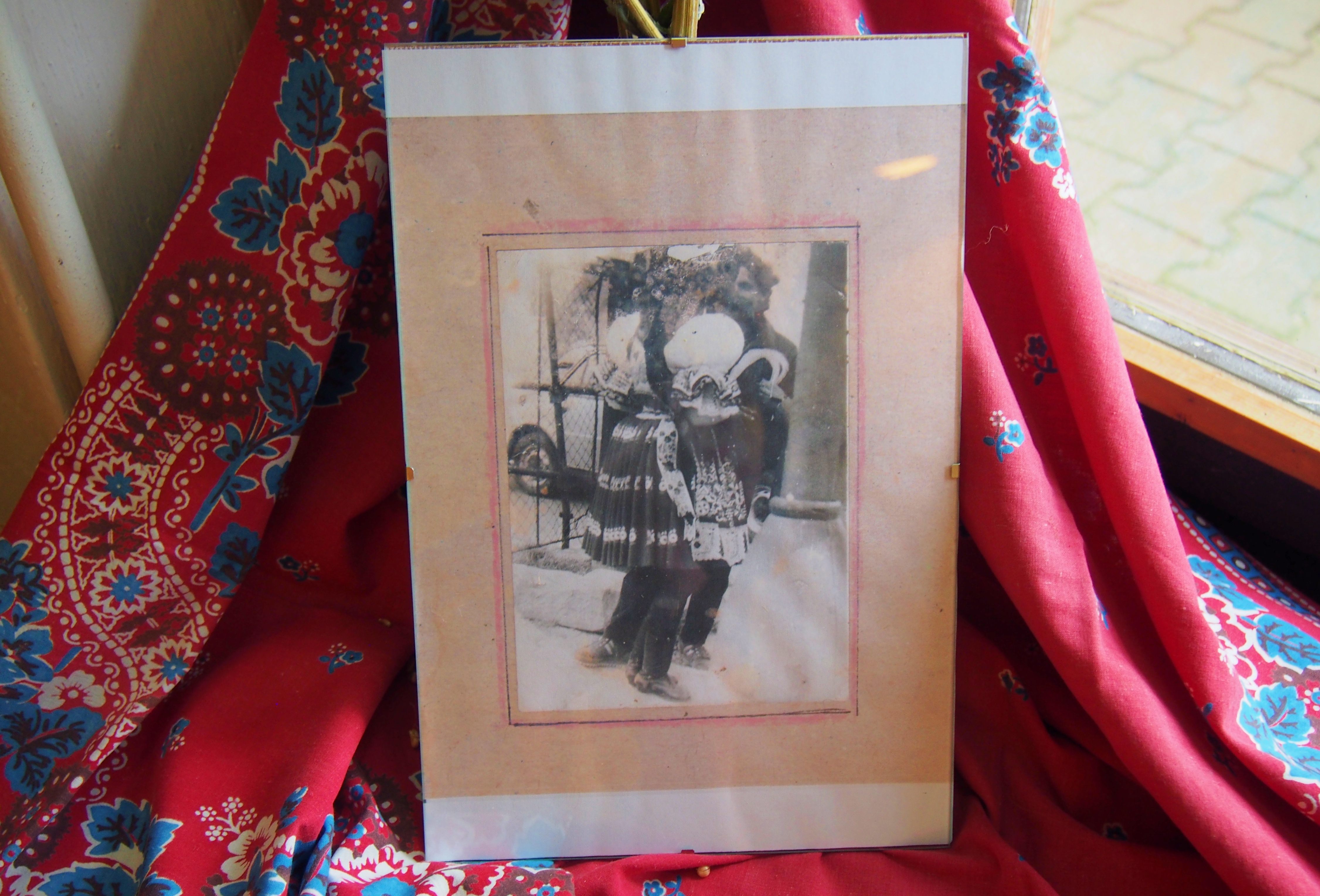
And here are instructions from him on how to take a beautiful photo:
“You have to have the wrong camera in the first place! If you want to be famous, you have to do something so stupid that no one in the world will do it so stupid! Not so nice, beautiful, nobody cares. ”
VLADIMÍR VAŠÍČEK – 100th BIRTH ANNIVERSARY
And I can’t help but remember the beautiful exhibition of paintings by the Czech academic painter and grandfather of my friends, Vladimír Vašíček. We have a beautiful big picture from him on his mother, when she was 18 years old. Until now, I’m sorry he didn’t paint me either when I was young and beautiful. 🙂 I think it’s one of the most prominent representatives of our abstract painting of the second half of the 20th century. I really like his artistic expression. He has a kind of extraordinary energy in him and his choice of colors is simply amazing.
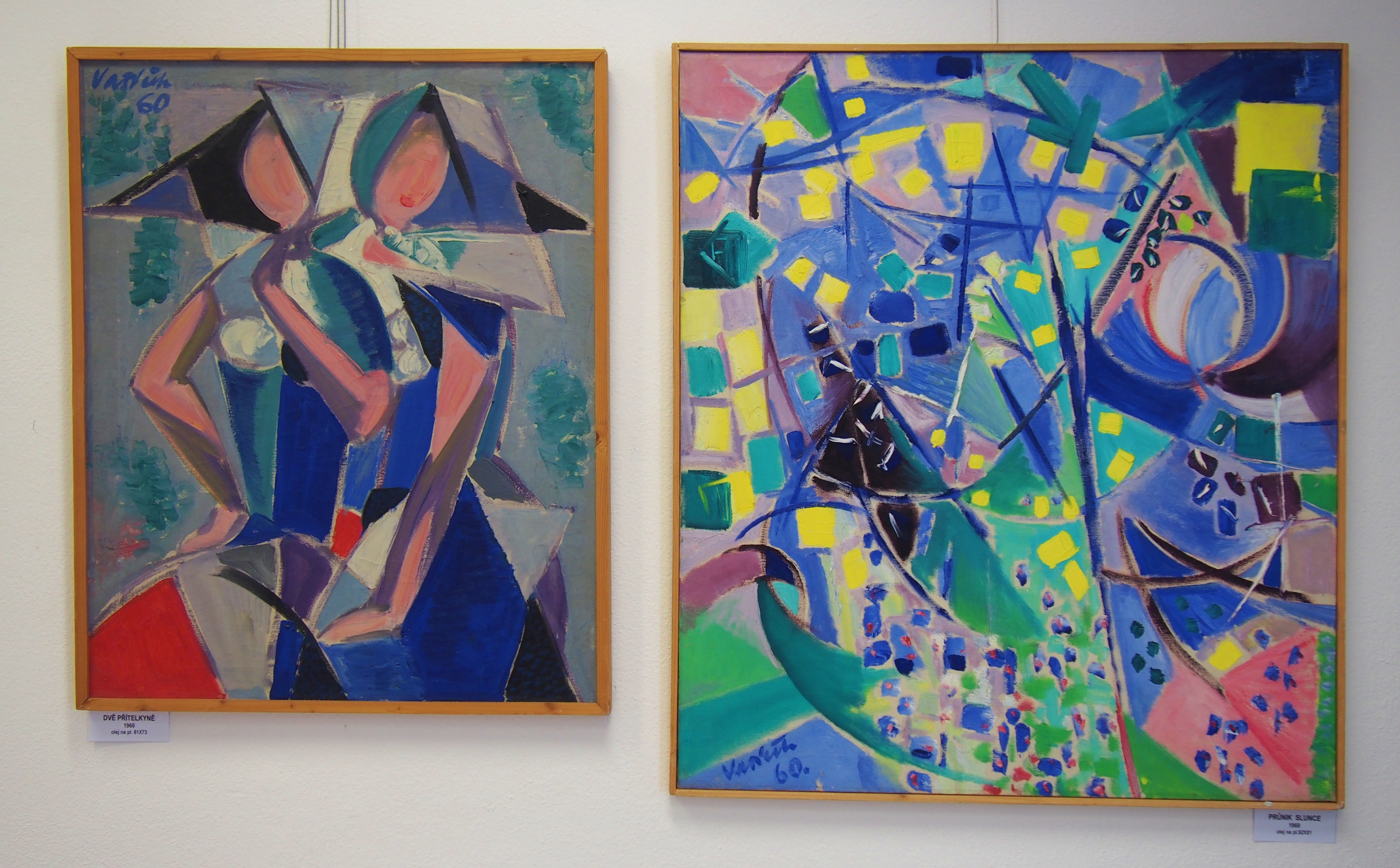
THE RIDE OF THE KINGS
Sunday belonged to the Ride of the Kings. Riders from Skoronice arrived in the square in front of the town hall. This party protects the king in a girl’s costume and with a rose in his mouth, asking permission to organize a ride, and shouts from the horse saddle to the spectators apt glosses focused on the nobility and life, for which they receive gifts. They then travel through the city with the king and at the same time make sure that no one can bear the king. The Ride of the Kings itself is preceded by great preparations – to open the horses properly, to prepare all the costumes and, of course, to prepare refreshments for the retinue that accompanies the king. The King has a unique costume that cannot be used other than for the Ride.

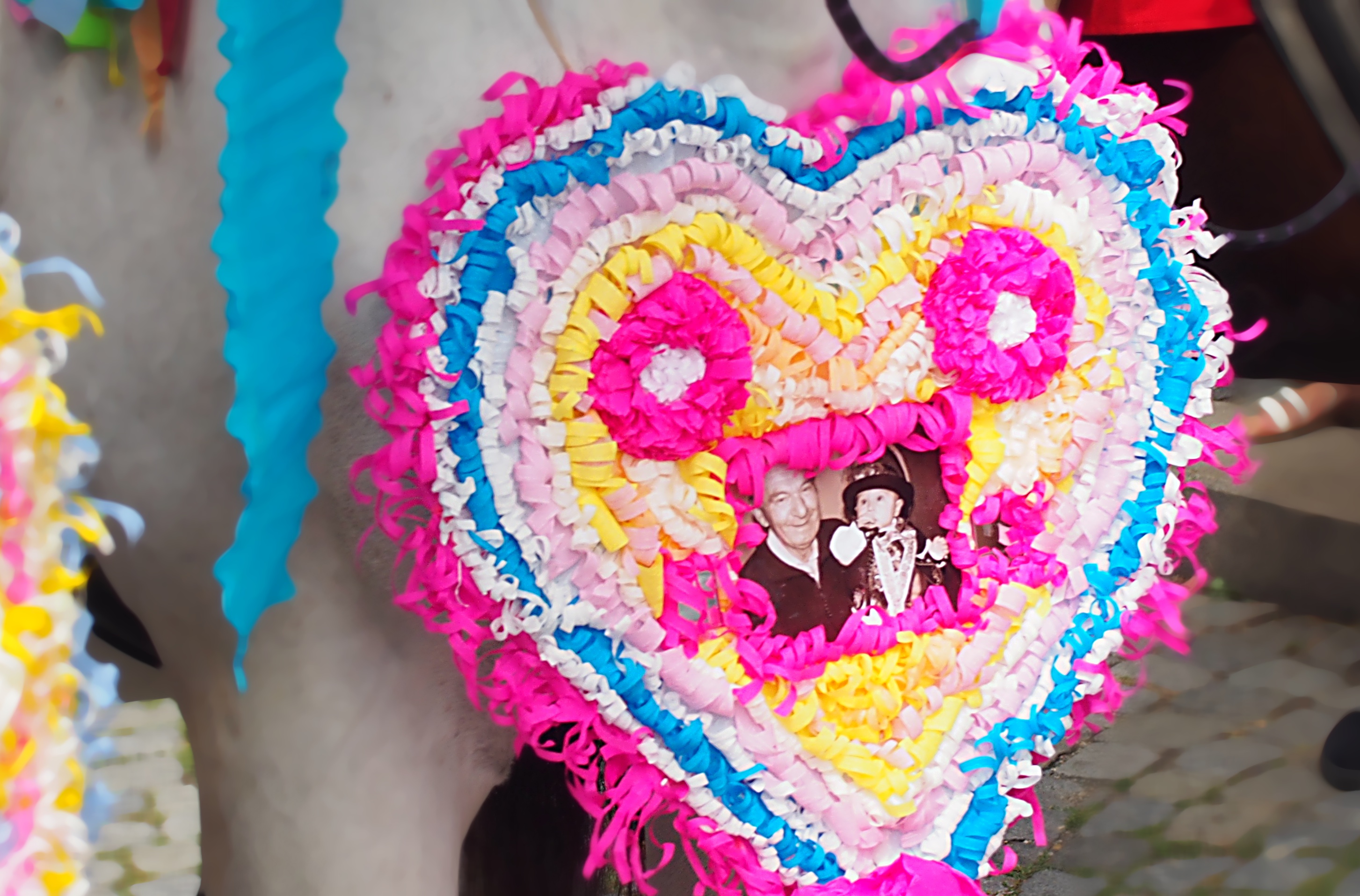

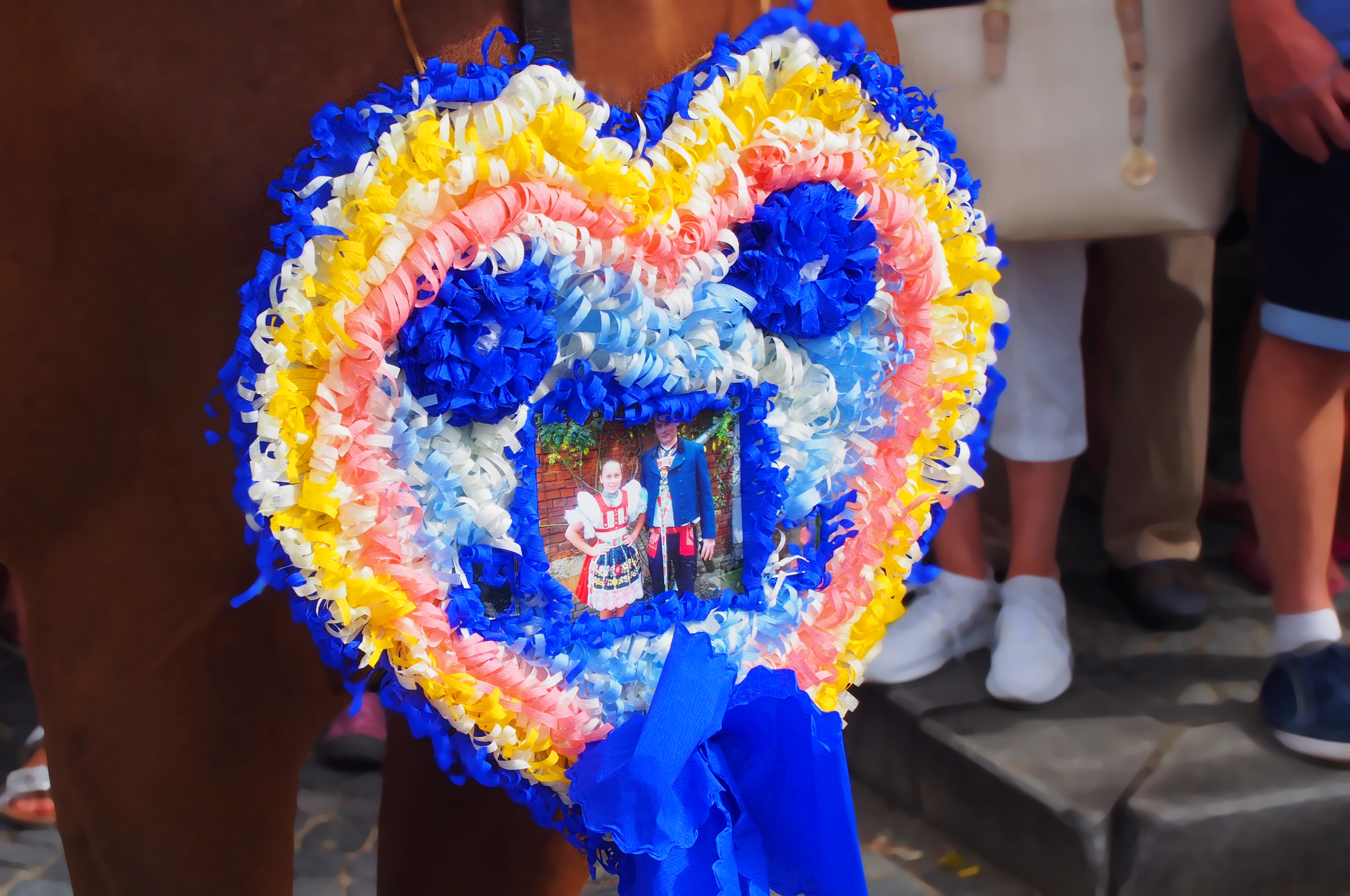
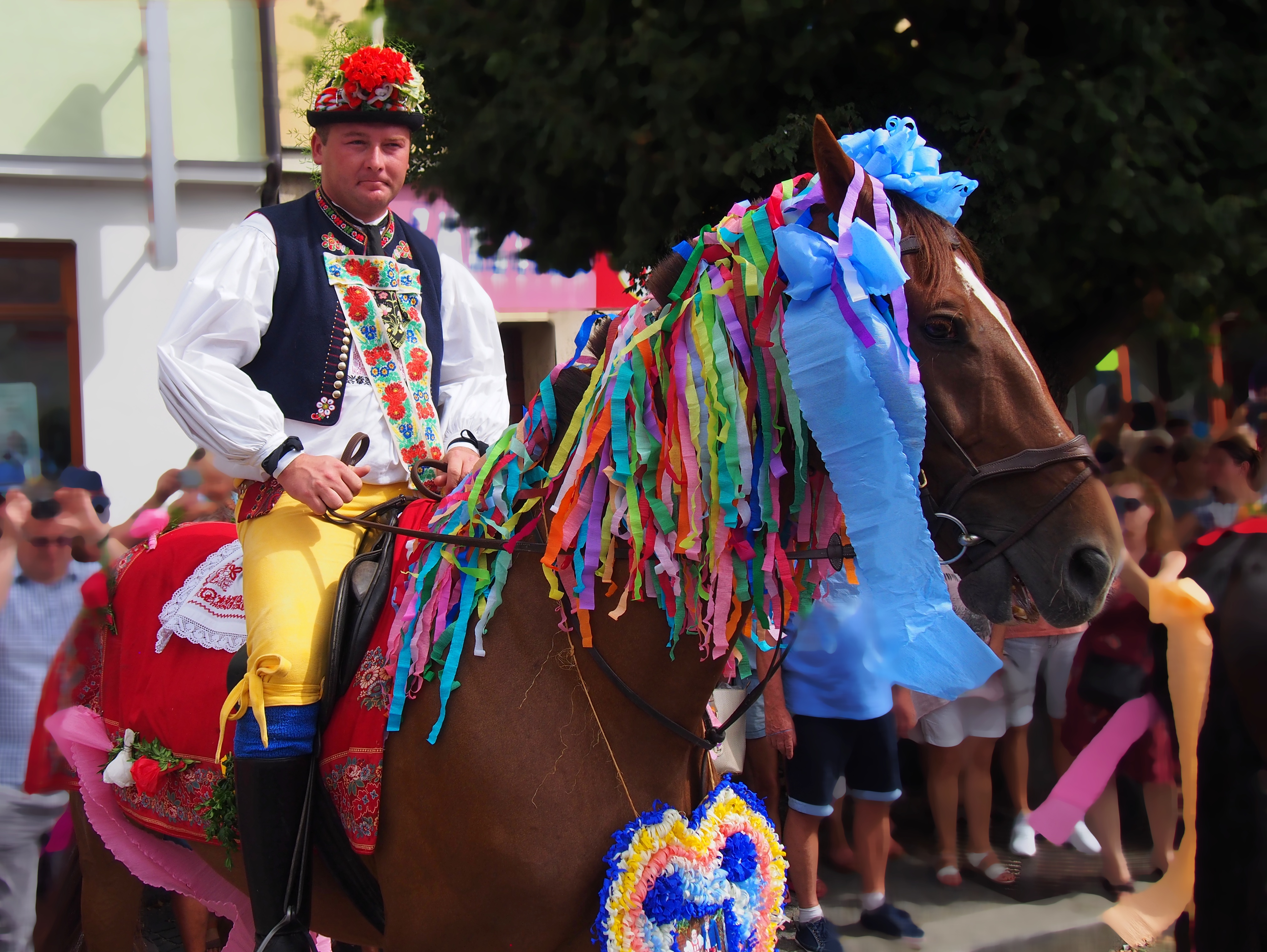
AND WHERE DID THE RIDE OF THE KINGS ACTUALLY COME FROM?
It has its origins in pagan times, when boys competed with each other to drive cattle. The best was the king. The second origin of the tradition is interpreted as the escape of the Hungarian king Matyáš Korvín from George of Poděbrady. In order not to reveal his appearance and speech, he dressed in a woman’s costume and put a rose in his mouth. A rose in his mouth is proof of secrecy. I love calls on the Ride of the Kings. Historically, it is not clear where they came from. In the past, boys rode through the village and asked for retirement. In order to obtain it, they called various summons, praising the housewife in the form of a carol, from which they received a pension for caroling. Today’s summons have been inherited for generations and are often very cool!
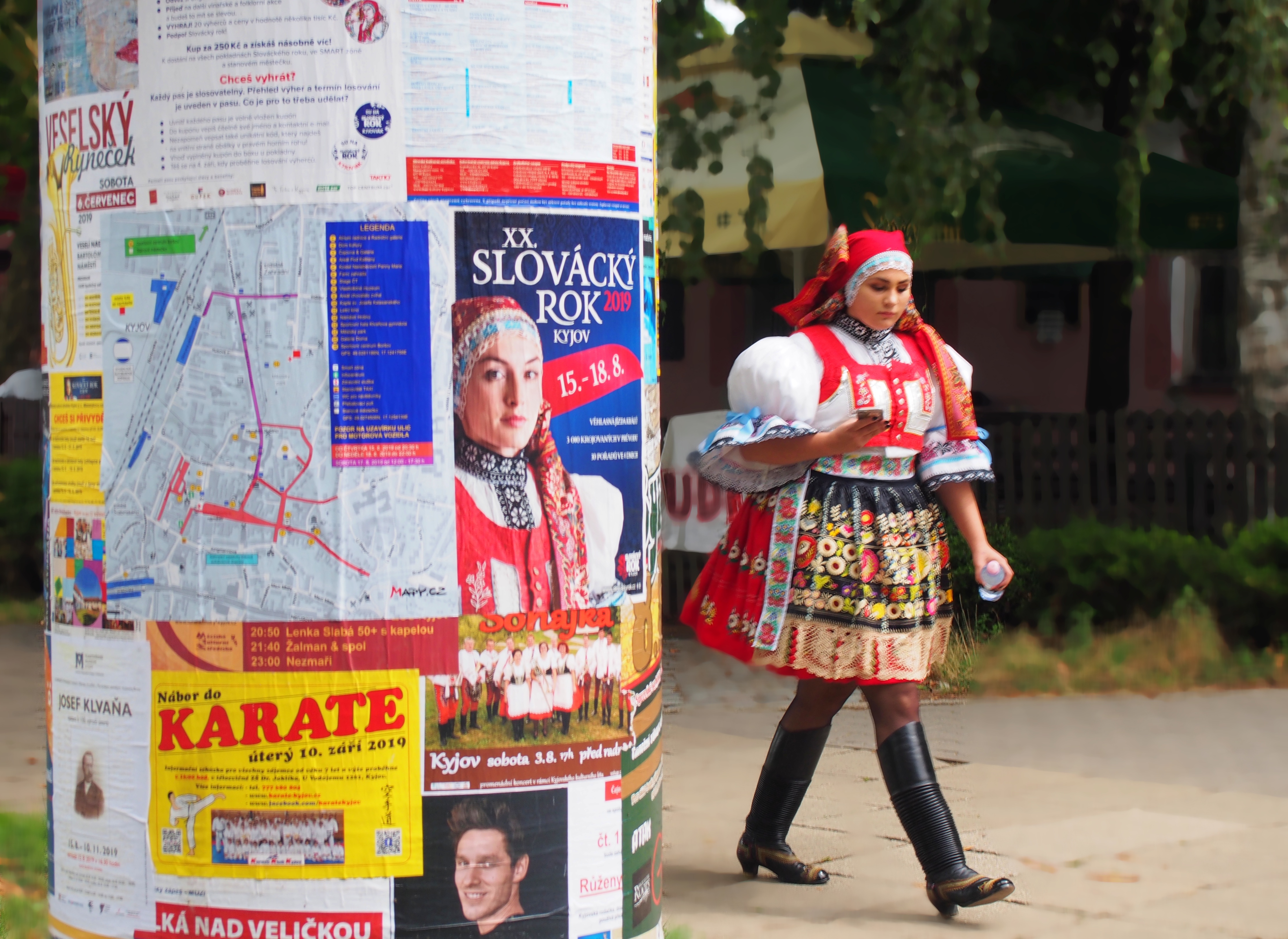
For me, the Moravian Slovak year is and always will be a nostalgic issue that I will be happy to remember. So, will you join us next time?
If you liked the article, I’ll be happy if you share it or leave some comments. 🙂 I would also want to invite you to join me on Instagram and on Facebook.

